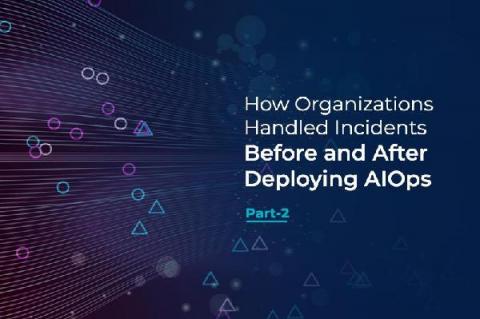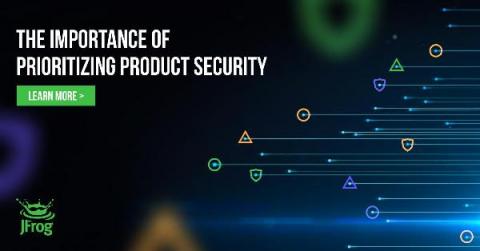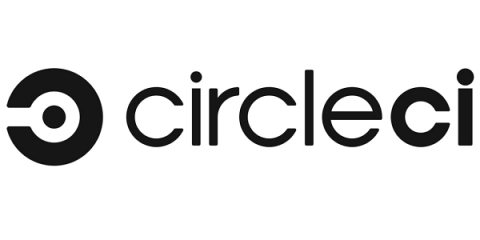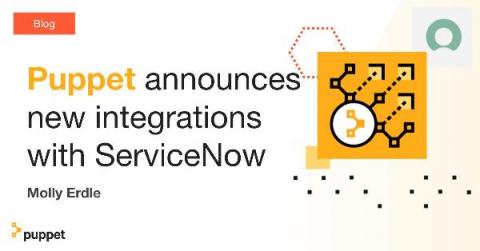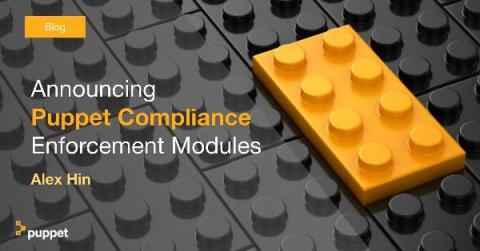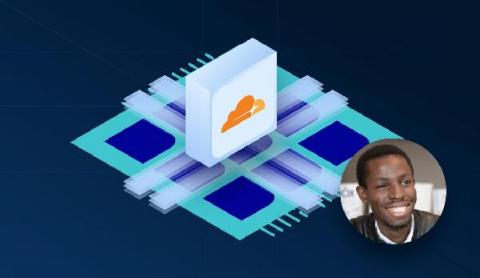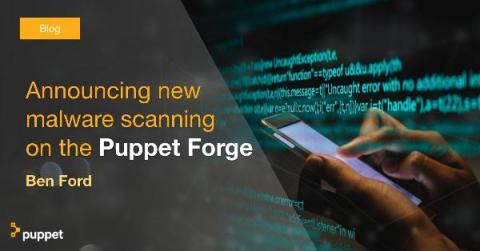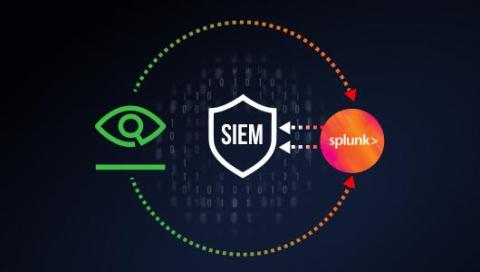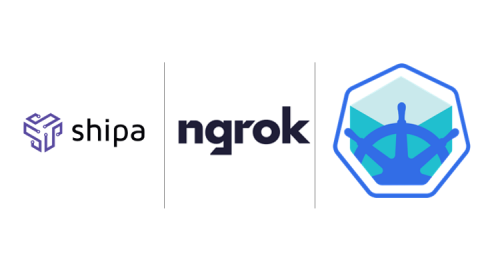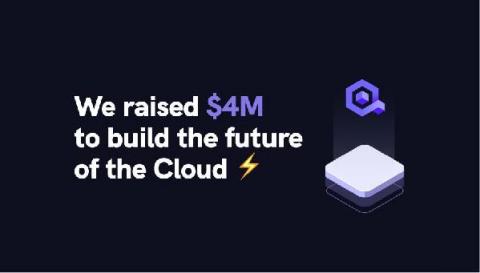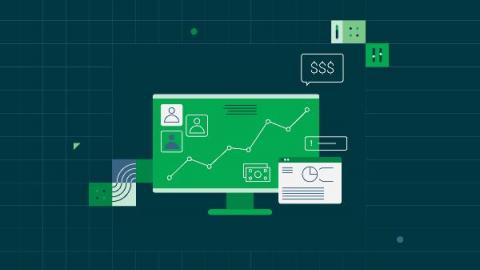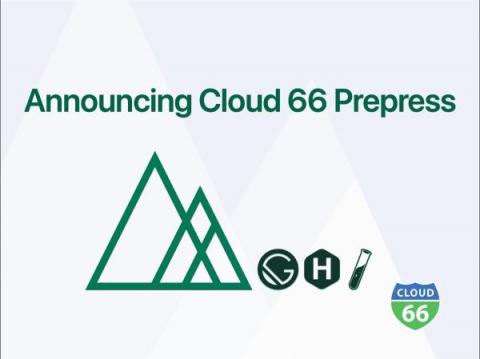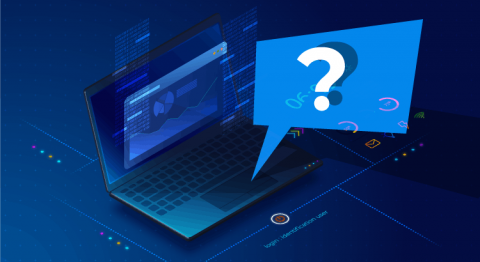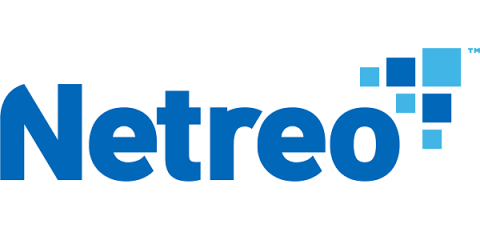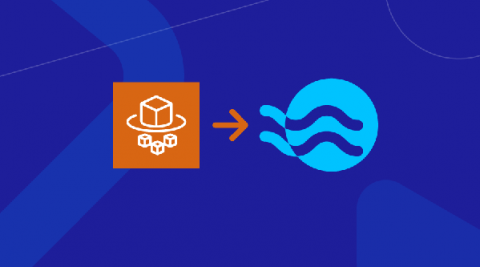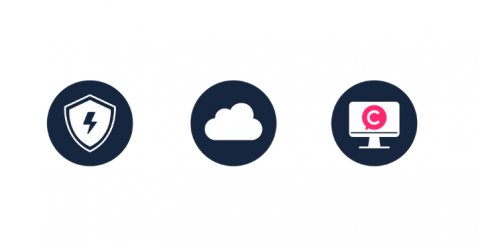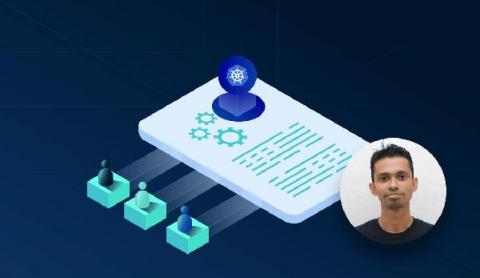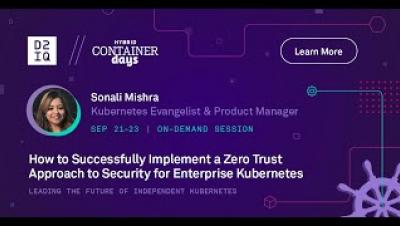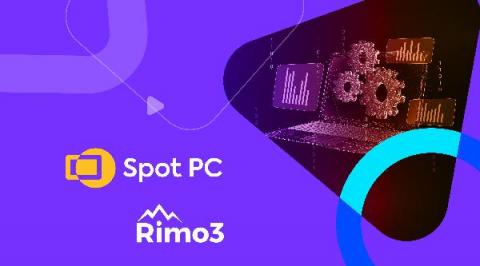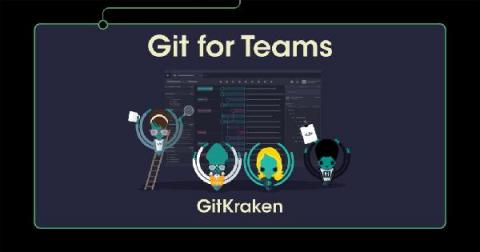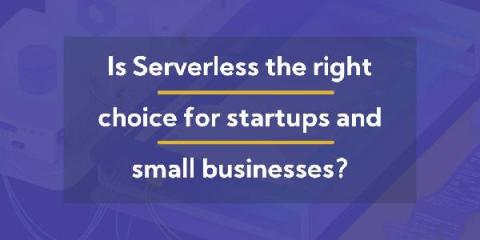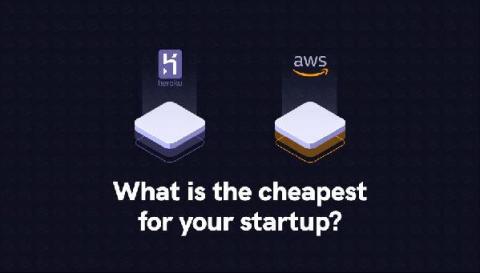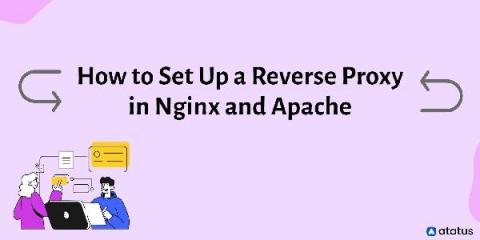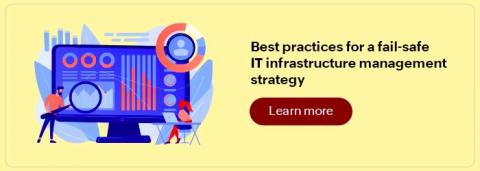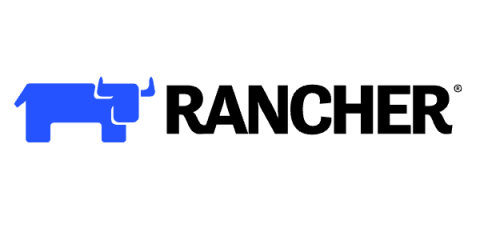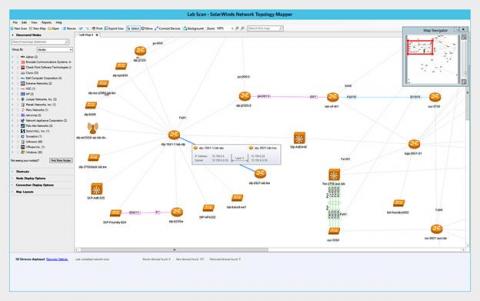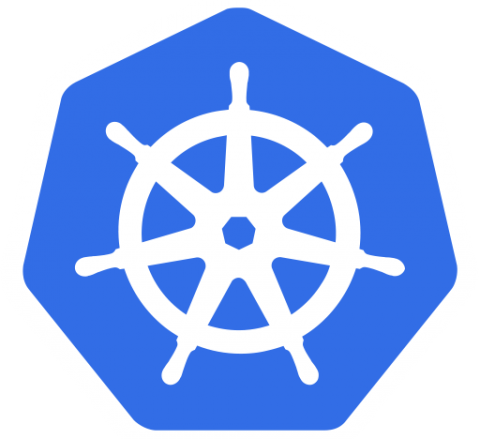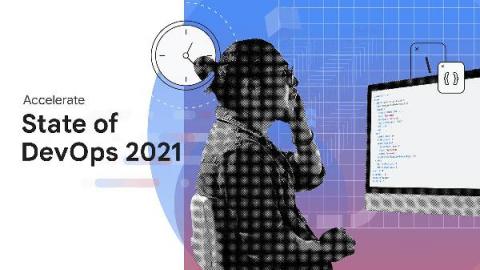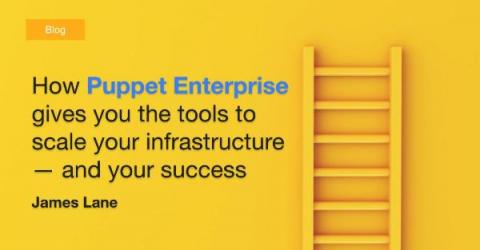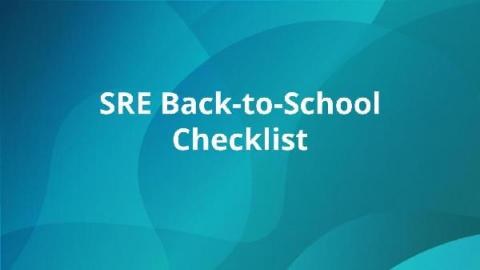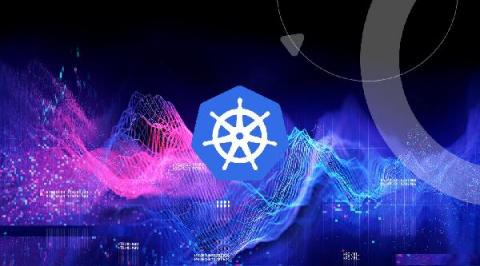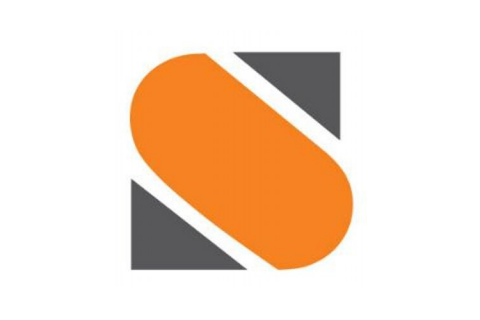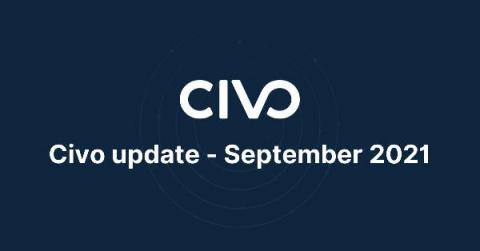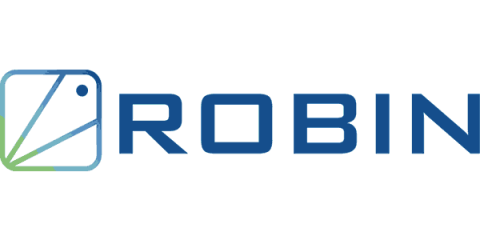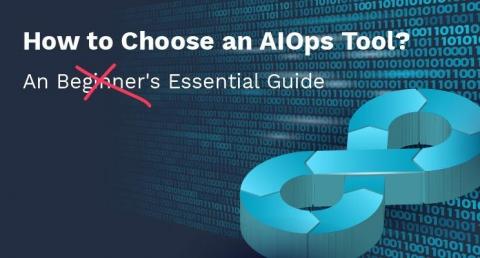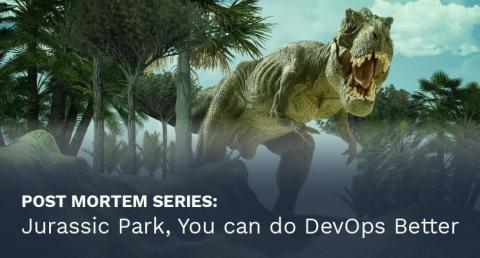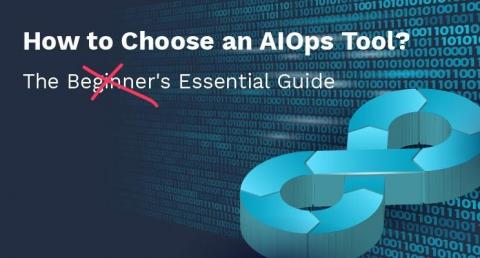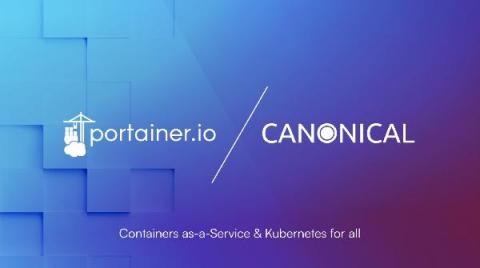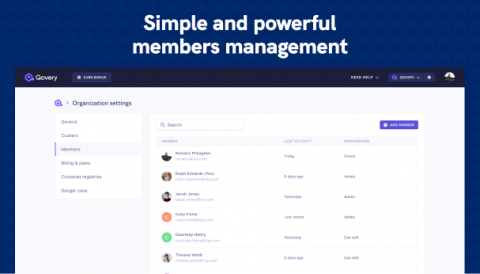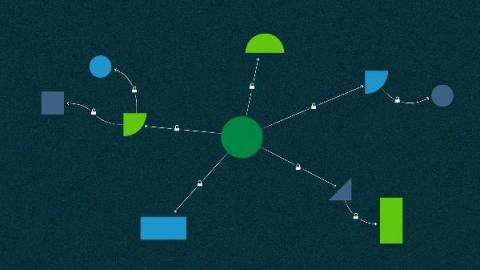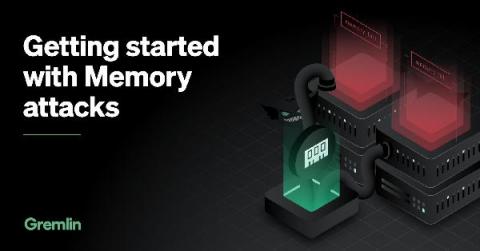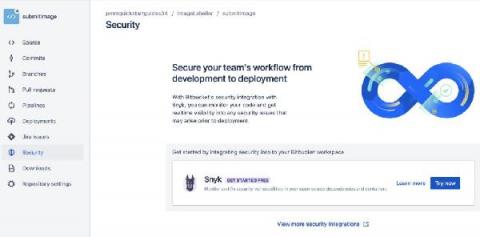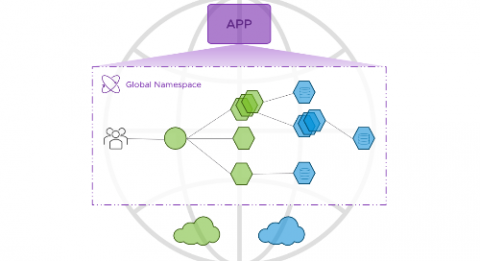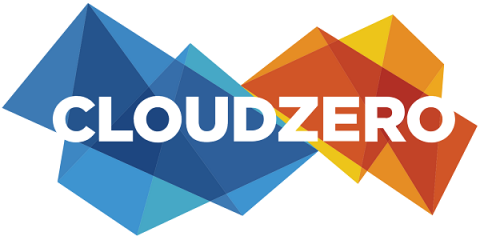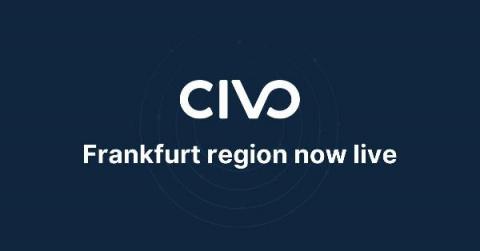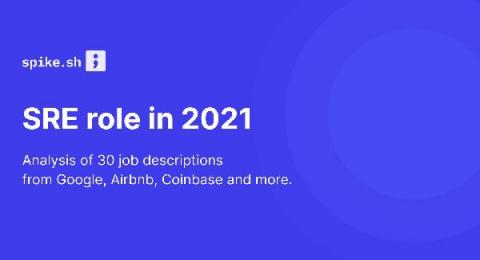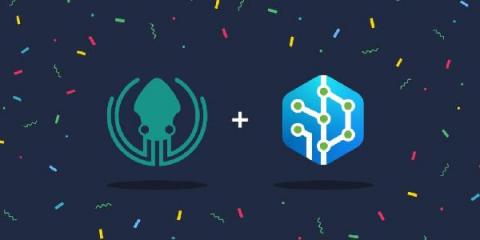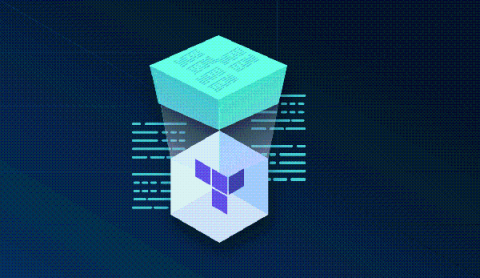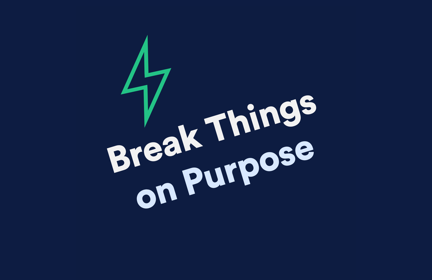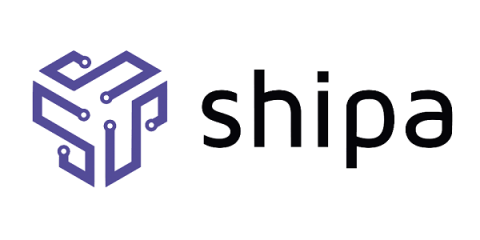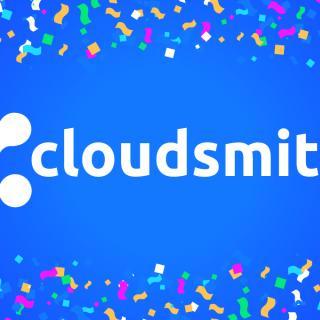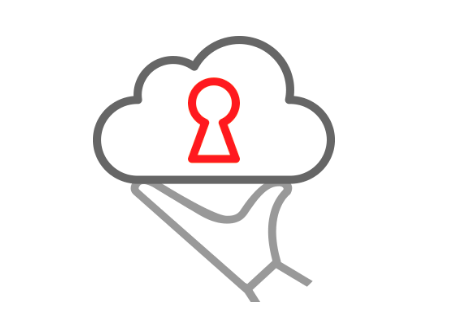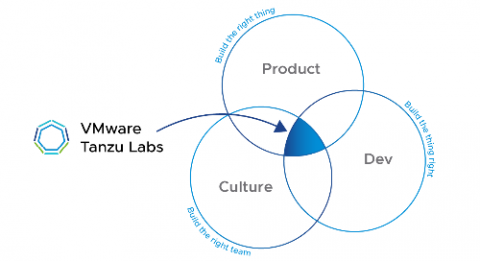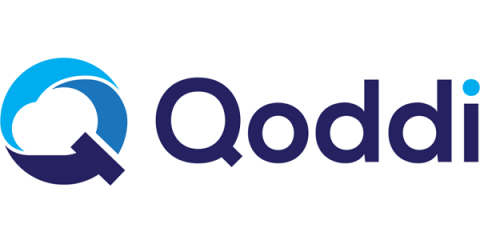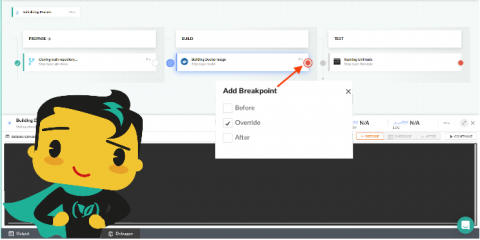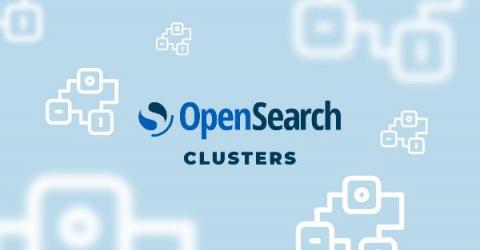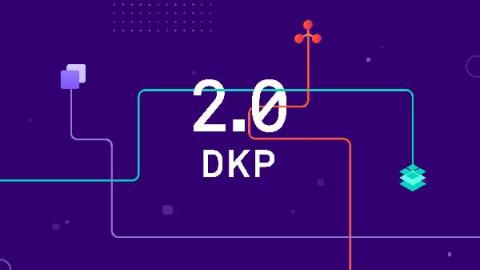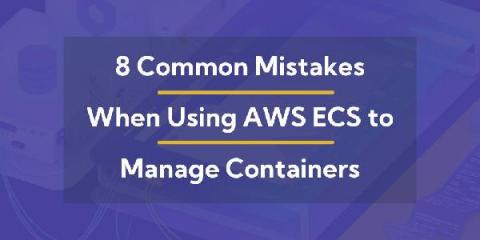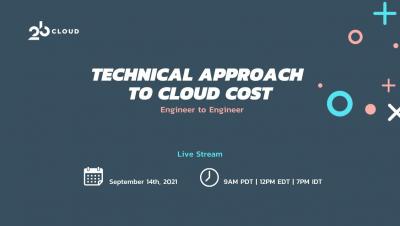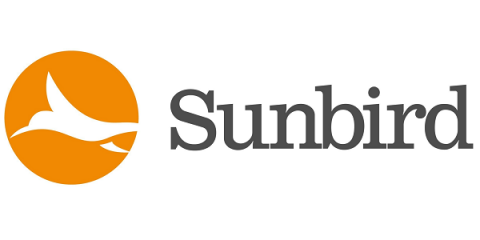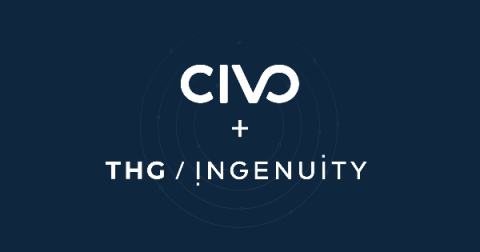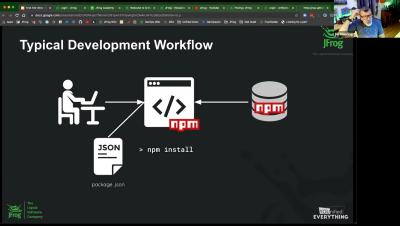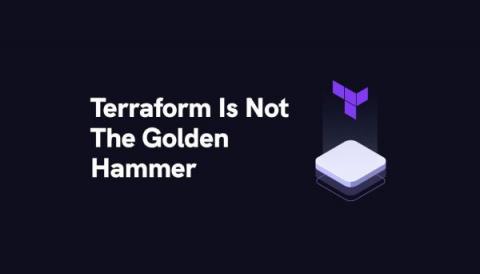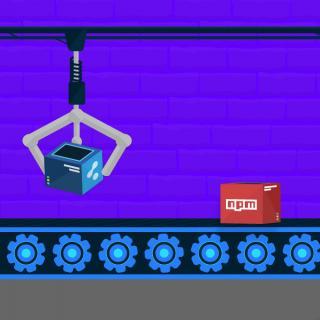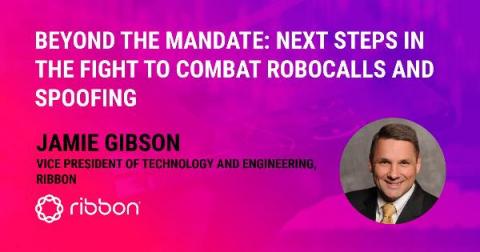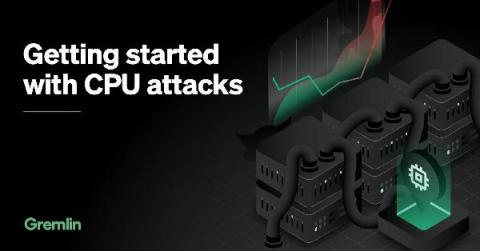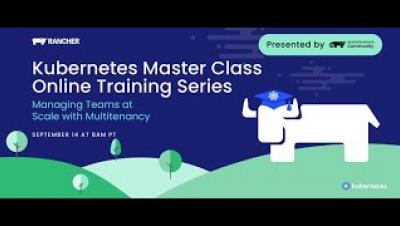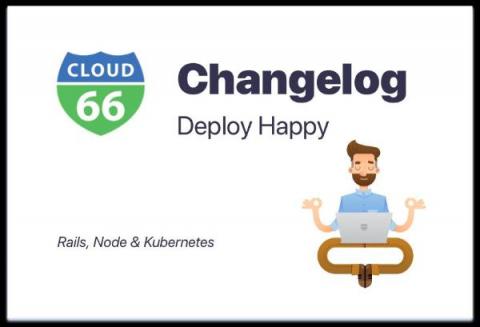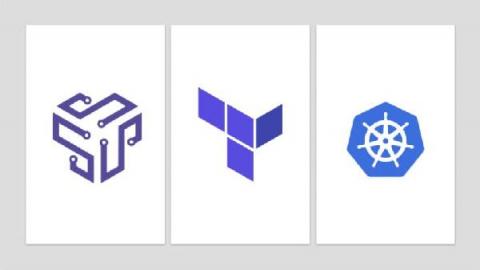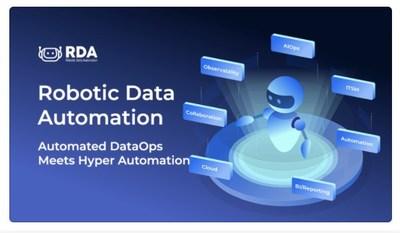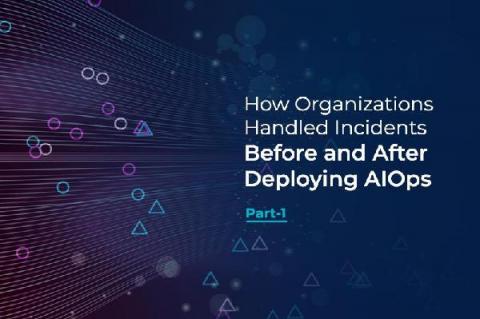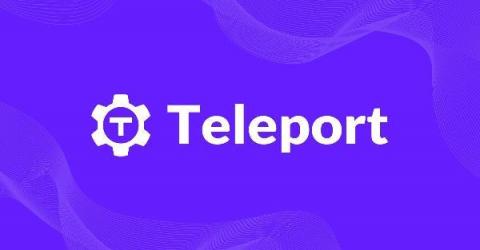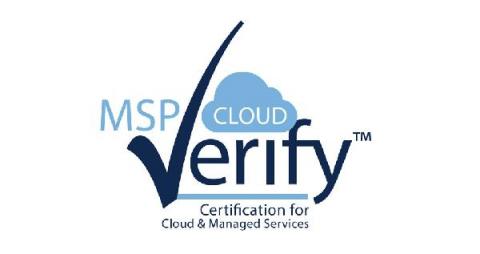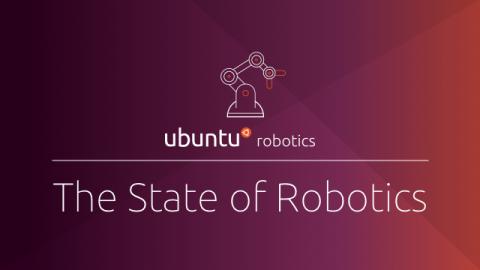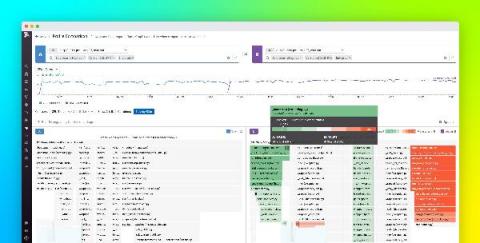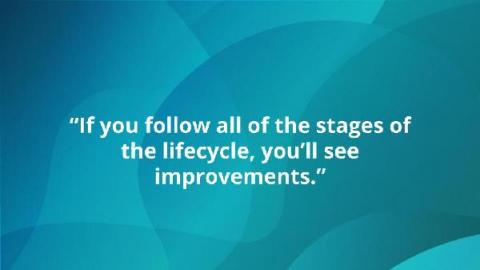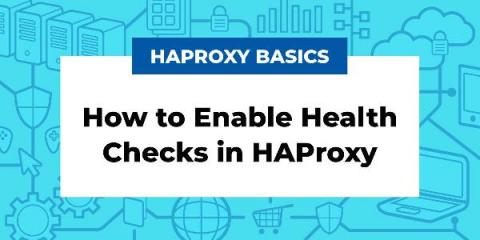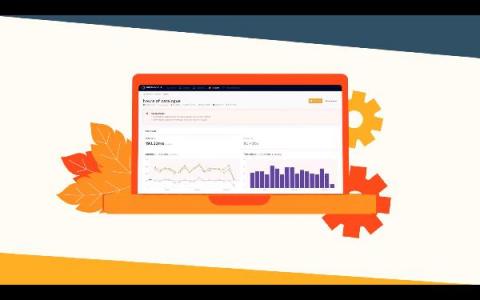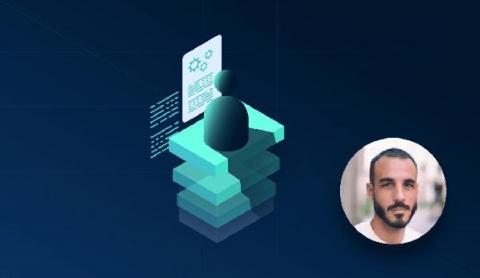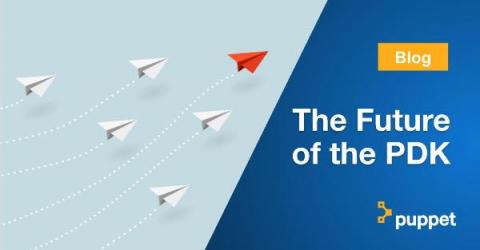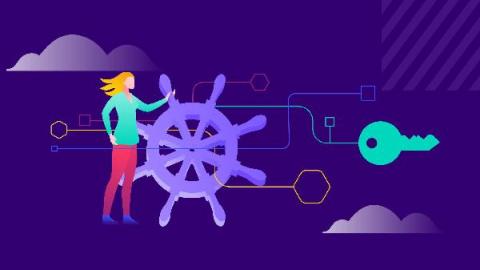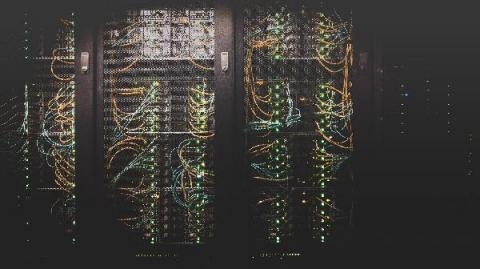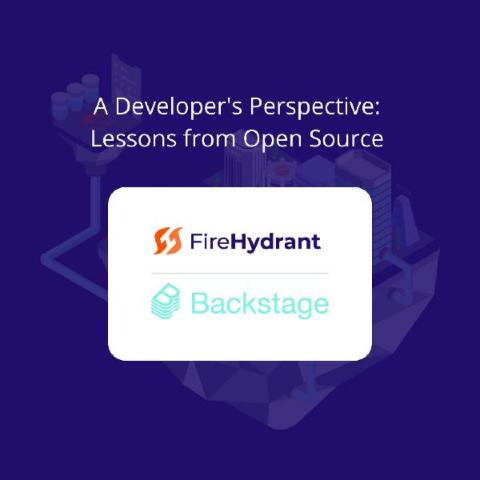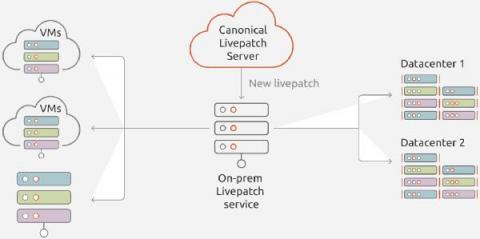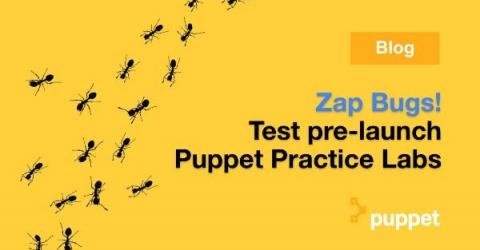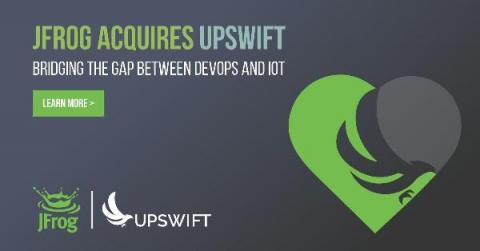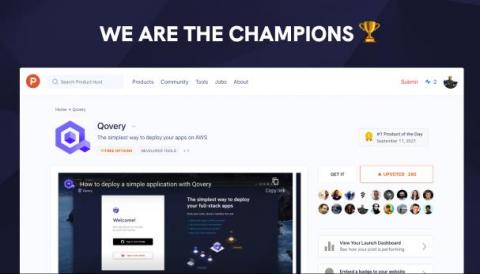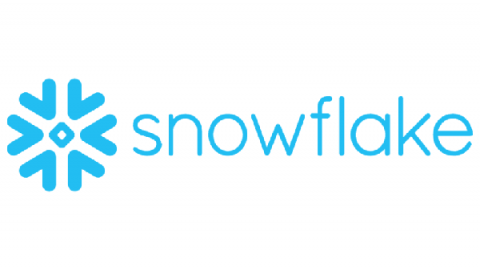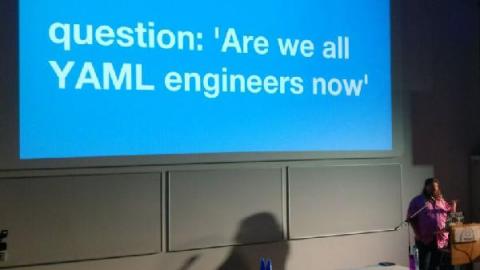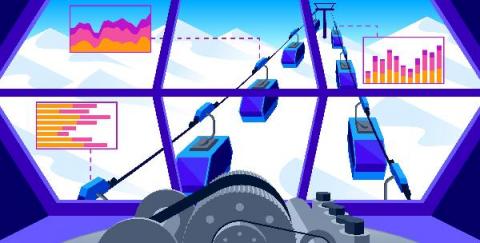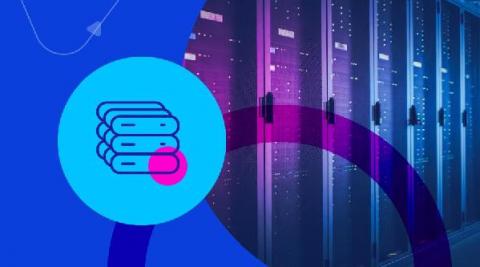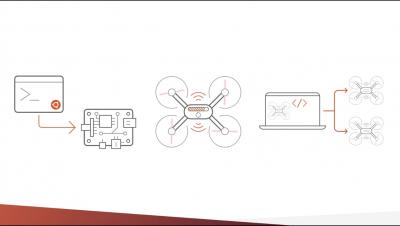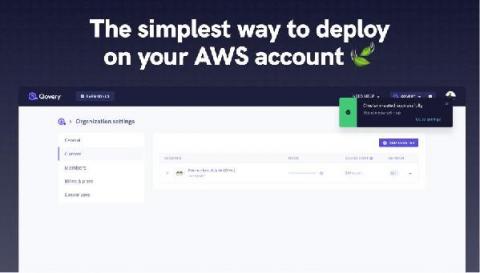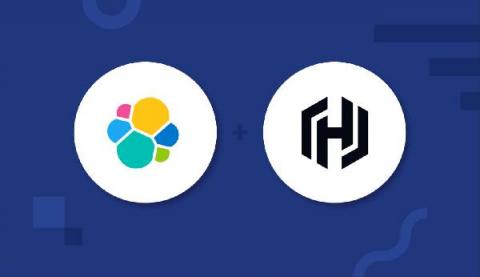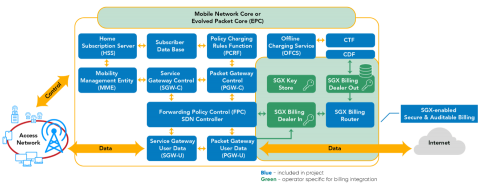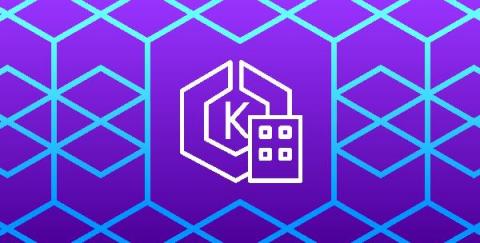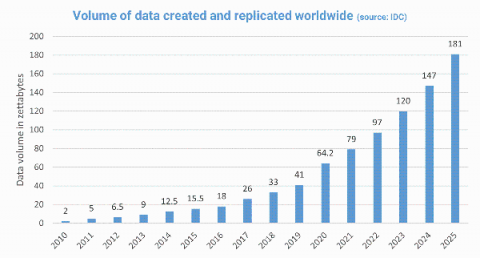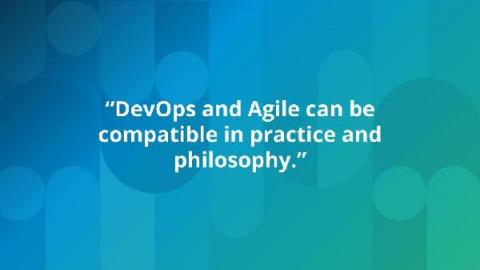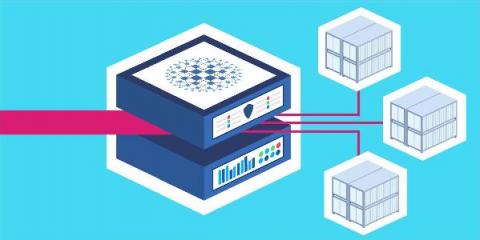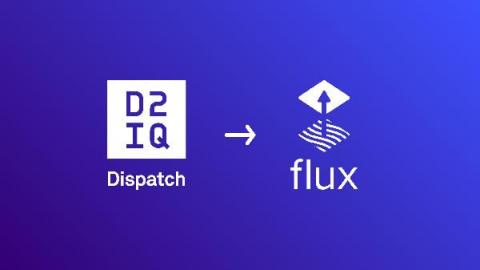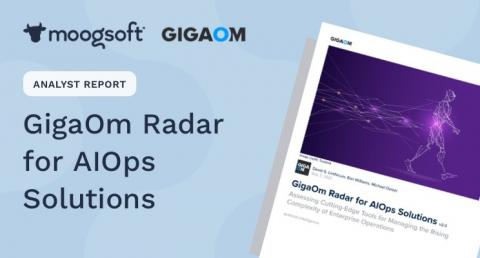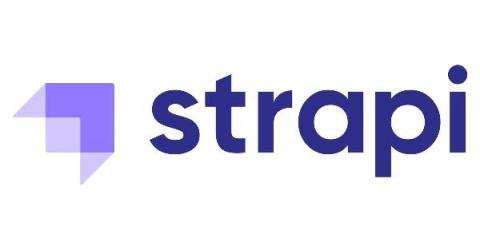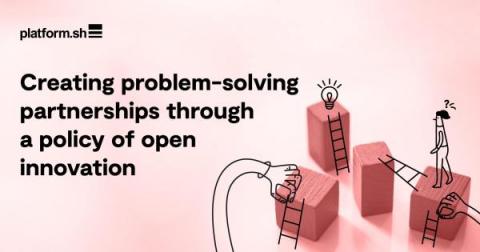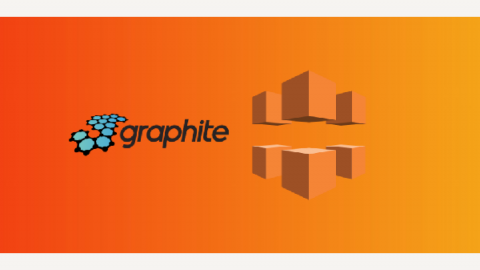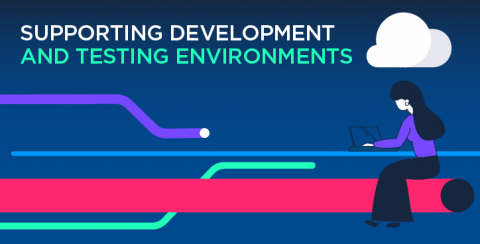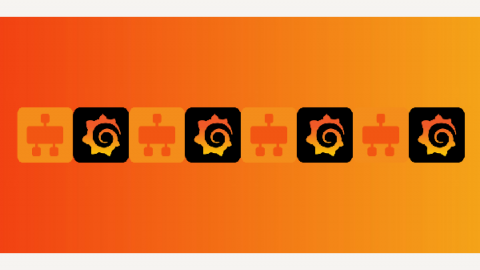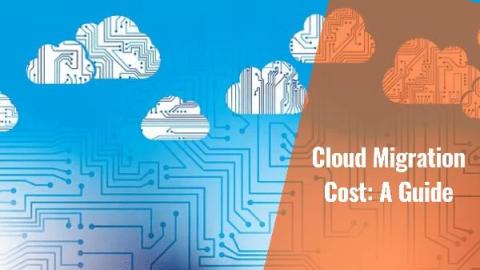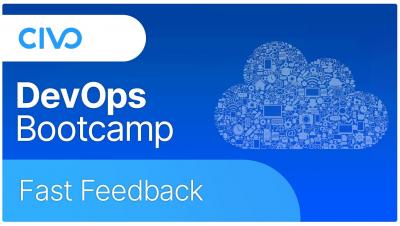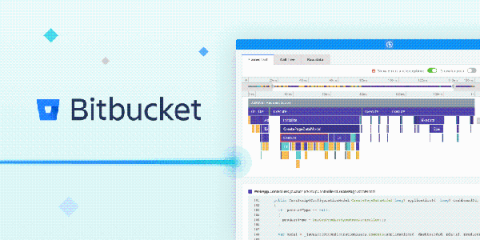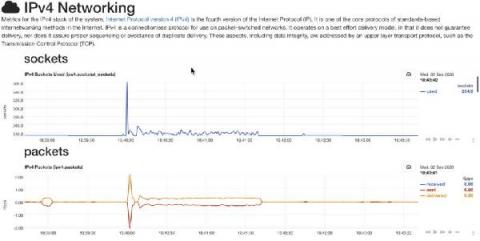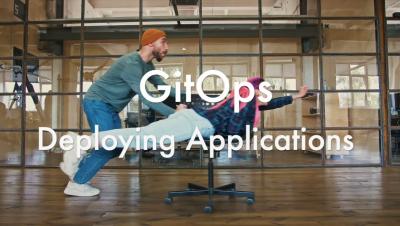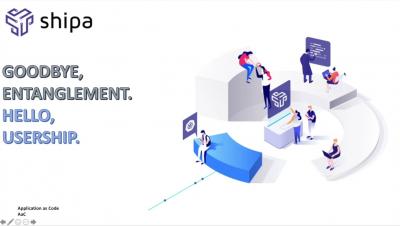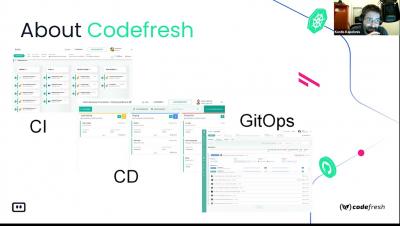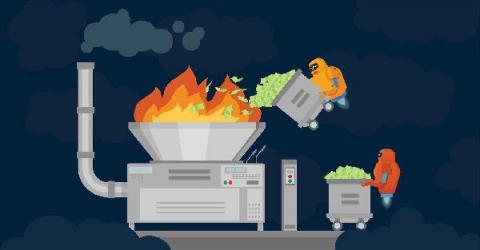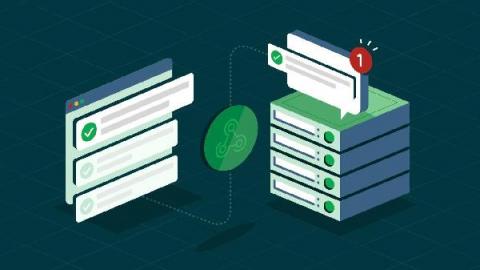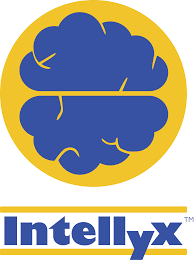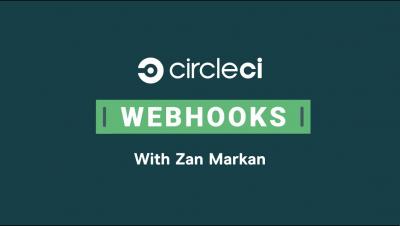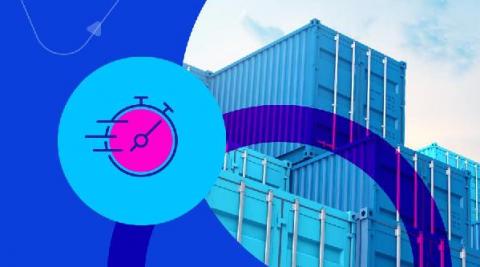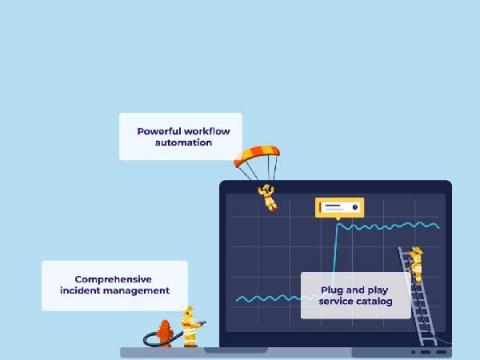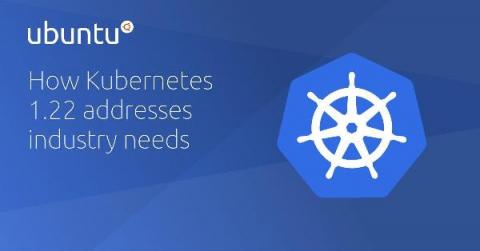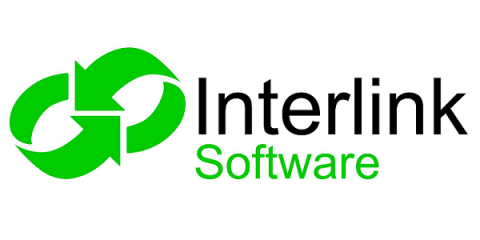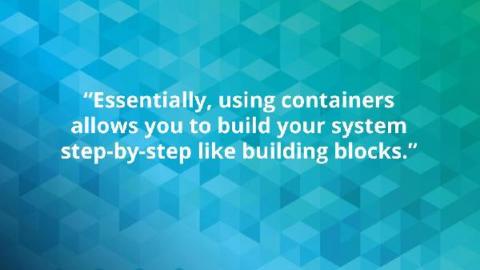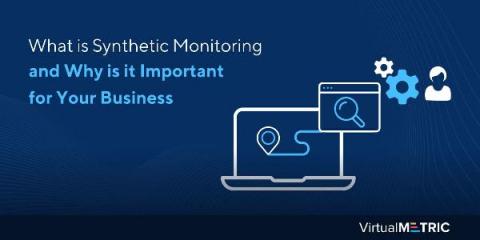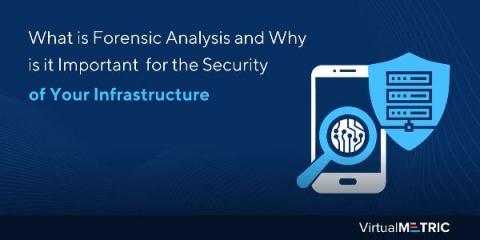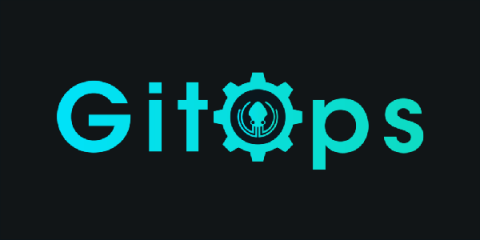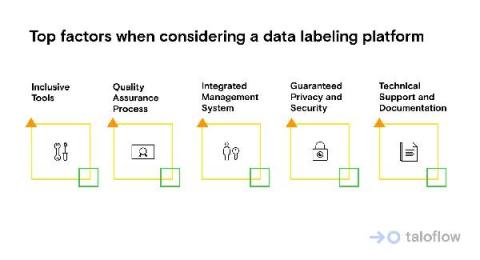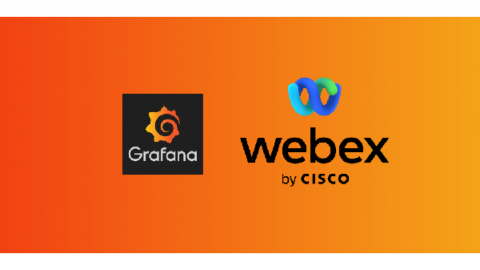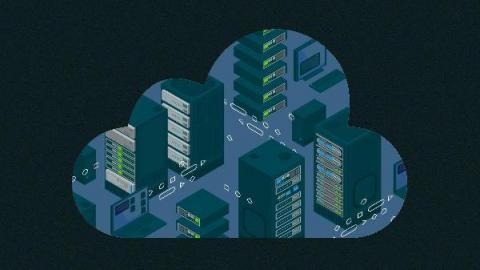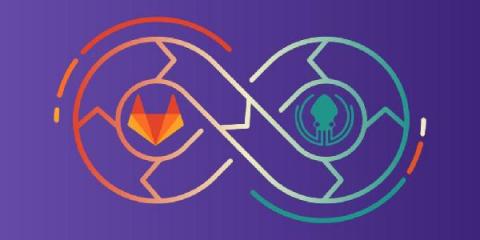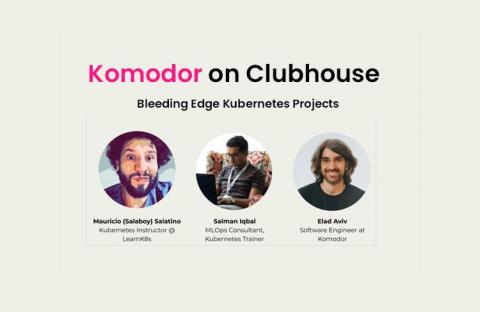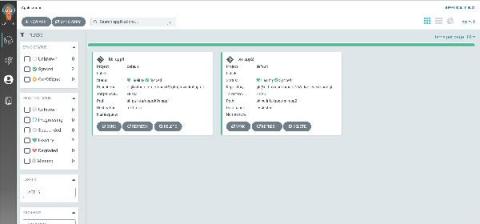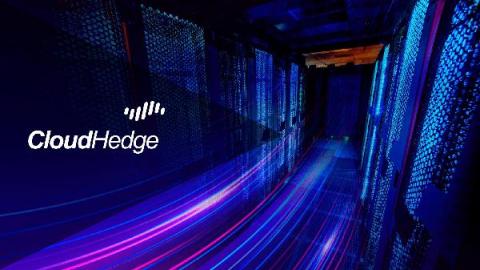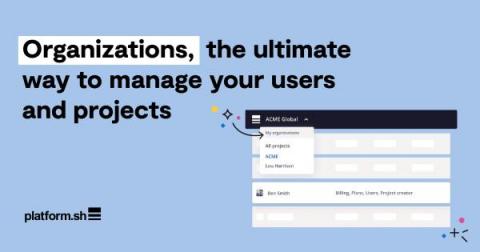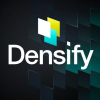Operations | Monitoring | ITSM | DevOps | Cloud
September 2021
How organizations handled incidents before and after deploying AIOps - Part 2
Using Helm with GitOps
This is the first of many posts highlighting GitOps topics that we’ll be exploring. Within this post, we will explore Helm, a tool used for Kubernetes package management, that also provides templating. Helm provides utilities that assist Kubernetes application deployment. In order to better understand how Helm charts are mapped to Kubernetes manifests, we’ll explain more details below and how to use Helm with and without GitOps.
Git vs SVN
If you’re writing or tracking code for a project you’ve likely heard of Version Control Systems, or VCS, also commonly referred to as source control. The primary function of a Version Control System is to host a project and track how it develops over time. With a VCS, developers can compare changes in files, track commits, propose changes, view project history, revert to old versions of the project, and more.
Performing database tests on SQL databases
Testing is one of those activities that if not exhaustive will not have its complete impact on your software development process. Oftentimes developers are only concerned about testing the application layer of the system (a.k.a the codebase) and ignore testing the data layer (the database) which is also as important as testing the code itself.
Ready, Set...Optimize Cloud
The Importance of Prioritizing Product Security
Reliability is not an engineering metric
If you're an engineer reading this, you might be wondering what I mean by the title. You might be a Site Reliability Engineer whose primary responsibility is to maintain the reliability of your company’s product/solution. You might be a software builder, a programmer responsible for building new capabilities and shipping them to production. All of these are important for any business to remain competitive.
CircleCI Achieves Significant Business Growth as Companies Increasingly Invest in Software Development
CircleCI at 10 and a look ahead
Today is CircleCI’s 10-year anniversary. I sent the whole staff an email that captures the sentiment of this important moment and I wanted to share it with you here. It offers a glimpse into what we’ve accomplished as an organization in the last decade and how much more we’ll accomplish in the decades to come.
10 years of CircleCI... Where are we headed next?
Improve data accuracy and reliability with the Puppet CMDB Sync for ServiceNow
It can be challenging to manage enterprise infrastructure across hybrid cloud and on-premises environments with accurate and timely tracking asset details — especially if you don't know what you have. The more systems deployed, the more visibility is necessary for your IT operations teams to meet critical business Service Level Agreements successfully.
Announcing Puppet Compliance Enforcement Modules
Hi, it’s me... Back again with something exciting: Puppet’s new Compliance Enforcement Modules, or CEMs. We’ve been working on some pretty cool stuff since we launched Puppet Comply last year. Lots of great feedback has come in, and we’re thankful for every opportunity we get to show our customers how we can help. This feedback comes in many forms, but one of the things we’ve heard time and time again is that achieving compliance is still hard.
Protecting internal services with Cloudflare Access
Learn How To Handle AWS Lambda Timeouts
The Confident Commit | Ep. 12: Tenth Anniversary Reflections from Our Newest & Oldest Engineers
Announcing new malware scanning on the Puppet Forge
The Forge team at Puppet has been hard at work for the past few months building out a malware scanning framework in order to help folks be more proactive about their security posture. Now, to be clear, this doesn't replace your own security mitigations. You should still audit untrusted code. You should still run your own virus protections. There are many layers in a robust security profile, and this is only one of them.
JFrog Xray + Splunk + SIEM: Towards Implementing a Complete DevSecOps Strategy
Good Vs. Bad FP&A: 5 FP&A Best Practices You Should Be Using
Shipa Cloud with Your Minikube Cluster
Embracing any new technology stack can certainly be a journey. No matter if this is your first time using Kubernetes or you have been on the Google Borg Team, getting up and started with Shipa Cloud is a breeze. You can bring your own Kubernetes Cluster and sign up for a Shipa Cloud account and you are well on your way to Application as Code excellence. Leveraging minikube is a free way to take a look at Shipa Cloud.
Qovery raises $4m to build the future of the Cloud
I am thrilled to announce that we have raised a $4M seed round with top notch investors. Join us in building the future of the Cloud - we are hiring! ----- The round is led by Crane and joined by Speedinvest, with participation from Techstars and angels including Alexis Le-Quoc (CTO and co-founder at Datadog) and Ott Kaukver (CTO at Checkout, ex CTO at Twilio).
CircleCI delivers 664% ROI and $13.98M NPV according to Total Economic Impact Study
Today we’re sharing findings from The Total Economic Impact™ Of CircleCI, a commissioned study conducted by Forrester Consulting on behalf of CircleCI. The study revealed that CircleCI delivered a 664% return on investment (ROI) over a three-year period and highlighted that our platform increased developer productivity by 10%. This results in a greater efficiency value of more than $4.3 million, enabling organizations to increase engineering velocity that drives business success.
Ubuntu and Canonical - providing an ecosystem of robotics solutions for your drones
Publishing to Rubygems with CircleCI
If you maintain a Ruby gem, you are definitely familiar with the recurring manual tasks surrounding the release of a new version. After doing this for a while, you inevitably start thinking that some of these steps could be automated. They can! With a few lines of code, you can bring the amazing world of continuous delivery to your project and increase the reliability of the whole process while freeing up some of your time. Double win!
Fireside Chat: Going GitOps with Argo
Cloud 66 Prepress: Build & deploy any Jamstack site on your own cloud
Announcing Cloud 66 Prepress
Today we are releasing a completely new product: Cloud 66 Prepress. Prepress is a DevOps product for pre-rendered web applications - particularly those built around Jamstack architecture. We announced Cloud 66 for Rails in 2013. Our Rails product helps developers deploy Rails applications to any cloud with a Heroku-like experience. Today, tens of thousands of developers worldwide use our products to deploy their applications to any cloud.
Conan Center Celebrates 1,000+ Recipes
Key concepts of systems and networks
In the middle of the information century, who has not surfed the Internet or used a computer, be it a desktop or a laptop? But do you really know what a computer is and what it is made of? and what about the Internet? It is important to know at least the most superficial layer of something as important as computer systems and networks, and therefore, we are going to talk about the key concepts of these two topics.
Why Do We Need Network Management? A Practical Explanation
Network management is a necessity. With today’s modern infrastructure, there isn’t a whole lot you can do effectively without it. It’s like tech’s version of the old American Express slogan, “Don’t leave home without it.” You have to deal with the ever-changing needs of the business, constant cybersecurity threats, and complex private and public networks.
What Is Data Observability and Why Do You Need It?
The word observability has its root in control theory. R.E. Kálmán in 1960 defined it as a measure of how well you can infer the internal states of a system from knowledge of its external outputs. Observability is such a powerful concept because it allows you to understand the internal state of a system without the complexity of the inner workings. In other words, you can figure out what’s going on just by looking at the output.
Top 5 Tips to Help Relieve IT Pro Job Stress
The Cost of Going Before You Know
Like many things in life, when you’re new to the cloud you don’t know what you don’t know. Given that migrating workloads to the public cloud is often a key component of a business transformation initiative, you want to avoid a long, expensive learning curve—especially since accelerating time-to-value is often a major impetus for the move.
Pulsant Cloud
We provide cloud capabilities to transform operations and drive your business forward
YOUR CLOUD, YOUR WAY
Find out more: https://www.pulsant.com/services/managed-cloud/
Import ECS Fargate into Spot Ocean
AWS Fargate is a serverless compute engine for containers that work with both Amazon Elastic Container Service (ECS) and Amazon Elastic Kubernetes Service (EKS). With Fargate handling instance provisioning and scaling, users don’t have to worry about spinning up instances when their applications need resources. While this has many benefits, it’s not without its share of challenges which can limit its applicability to a wide variety of use cases.
Aligning Your Enterprise Network With SaaS
Demystifying Kubernetes RBAC
A Zero Trust Approach to Enterprise Kubernetes Deployment
Reliable Applications for Cloud Desktops with Spot PC and Rimo3
Moving employees to Azure Virtual Desktop (AVD) or Windows 365 can have many advantages, including: But migrating to a virtual desktop environment also has its challenges. Perhaps the largest is ensuring that applications can be installed on the virtual desktop environment. And then, beyond installation, ensuring that each application performs at least as well as in the users’ former environment.
Git for Teams
You groan. Perhaps not audibly, but your eyes widen and then slowly shut with dread. After a lucky streak of merging feature branches without incident, you finally hit a Git merge conflict. Unsure of where to start, you sheepishly bring up Slack and direct message a plea for help. Maybe this has been you, or maybe you’ve just seen it happen. Either way, it means spending time untangling the code by yourself, or with the sympathetic assistance of another.
Functional vs object-oriented programming
Programming is as much an art as it is a science. Personal preference plays a large role in determining your programming style, so you may not be surprised to find yourself in a debates with a peer. One ongoing debate is the choice between two different programming paradigms called functional programming and object-oriented programming. Which one is better? Which should you use?
Serverless benefits for startups
I’ve had a great conversation with a buddy of mine who is launching a new service, and while he is not a technical person, he came up to me asking about serverless and if it could have an actual impact on his startup. Naturally, I got very excited about the topic and proceeded to list all the benefits of serverless technology and how decentralized technology has revolutionized the industry, so on so forth. After a 15-minute monologue, the guy stops me and politely asks me the question again.
Private Package Repositories Part 2: The Influencers
In part 1 of our package repositories series, important terms like packages, metadata, dependencies, and upstreams were explained. In this part 2, we will take it further, diving into trends within the software landscape that have changed what developers and organizations want from a package repository. In recent years we’ve seen a push to use managed services in the cloud, automation, supply chain security.
Heroku vs AWS: What is the cheapest for your startup?
In today's digital age, the internet and computer technologies have become a part of our lives. Organizations are moving their applications to the cloud to gain benefits of flexibility and lower costs. Heroku and AWS are two popular cloud service providers. AWS is a cloud services platform offering computing power, database storage, content delivery, and many other functionalities. Users can choose individual features and services as required.
Troubleshooting vs. Debugging
The life of a developer these days is more complicated than ever, as they are increasingly required to expand their knowledge across the stack, understand abstract concepts, and own their code end-to-end. A major (and very frustrating) part of a developer’s day is dedicated to fixing what they’ve built – scouring logs and code lines in search of a bug. This search becomes even harder in a distributed Kubernetes environment, where the number of daily changes can be in the hundreds.
FireHydrant - Incidents Happen
How to Set Up a Reverse Proxy in Nginx and Apache
To work efficiently, the client and server exchange information on a regular basis. A webserver typically employs reverse proxies. A client sees a reverse proxy or gateway as if it were a regular web server, and no extra configurations are required. The client sends standard requests to the reverse proxy, which then determines where to send the data, providing the final result to the client as if it were the origin.
People over process - Civo DevOps Bootcamp 2021
Leveling up your IT management game: 4 best practices for IT infrastructure management
IT infrastructures are constantly evolving, meaning conventional management processes have become outdated and inadequate to tackle complex IT issues. A study by ESG found that 75% of IT decision-makers admit that complexity of IT infrastructures has increased drastically from two years ago. This rapid surge in complexity has disrupted admins’ understanding of network behavior and decreased the chances of foreseeing unanticipated network issues.
Implementing a dashboard for your Kubernetes applications
How to Build and Run Your Own Container Images
The rise of containerization has been a revolutionary development for many organizations. Being able to deploy applications of any kind on a standardized platform with robust tooling and low overhead is a clear advantage over many of the alternatives. Viewing container images as a packaging format also allows users to take advantage of pre-built images, shared and audited publicly, to reduce development time and rapidly deploy new software.
All About Network Topology-Types and Diagrams
Breaking The Tag Barrier: A Better Way To Organize Cloud Spend
Kubernetes application dashboard
Giving developers a portal they can use to understand application dependencies, ownership, and more has never been more critical. As you scale your Kubernetes adoption, you want to make sure you avoid service sprawl, and if not done early, application support will become a nightmare.
What you need to know about the Accelerate State of DevOps 2021
How Puppet Enterprise gives you the tools to scale your infrastructure - and your success
This is the second post in a four-part series on why Open Source Puppet users have made the decision to move to Puppet Enterprise. If you’re considering making this change, read on for pros and cons! As more and more businesses are moving from Open Source Puppet (OSP) to Puppet Enterprise (PE), they are experiencing multiple benefits. In this blog series, we’re exploring the biggest benefits we hear from customers about their experience moving from OSP to PE.
Kubernetes Master Class Windows Container Support with Rancher
SRE Back-to-School Checklist
Use Ocean's Cluster Roll to update nodes
Kubernetes has what you may consider an aggressive release cycle. There have been three to four releases per year since 1.0 was released in July of 2015. Perhaps you’ve found it all too easy to get behind a couple of versions. Running the latest, or nearly latest release will help protect your organization from security issues. This is because releases are deprecated once they fall three minor versions behind the latest. Staying current isn’t just about security though!
StackStorm announces Partnership Program with the 5 founding Partners
Earlier this year StackStorm established a partnership program with some first partners that supported StackStorm in its Open Source journey when the project joined the Linux Foundation. The Partners Program was created to recognize companies and organizations that provide ongoing assistance to the StackStorm Open Source project. Because of the substantial support provided by these partners, we have been able to expand and improve StackStorm.
Circonus' Zero-Gravity Data Eliminates Challenges and Limitations Associated with Massive Data Sets
Telemetry data – the metrics and measurement data emitted by all machines and devices from servers to robots – is exploding. Telemetry data generation is growing so fast, there are no reliable estimates of just what that growth rate looks like. Theo Schlossnagle, founder of Circonus and widely respected computer scientist, estimates that telemetry data is growing at the rate of 1×1012 every ten years. Suffice to say, that’s a lot.
Civo update - September 2021
Welcome to the Civo update for September 2021. In case you missed the big news... this week we successfully launched our first region in Frankfurt, Germany. Plus we announced our new strategic partner, THG Ingenuity, who invested $2 million into the company. This will allow us to quickly invest in our infrastructure, including more regions across the globe throughout the next 12 months.
Building a frictionless Azure support workflow
How ORAN is moving the industry to a cloud-native model
Open RAN or ORAN is a game-changing Radio Access Network (RAN) evolution combining RAN functionality with cloud-native design, scale and automation. Legacy RAN was and is still intentionally designed using closed and proprietary architectures that locked operators to a particular vendor, for both radio and supporting hardware (baseband units). Now with ORAN, operators can not only decouple vendors, but also software from hardware, facilitating the migration to a cloud-native model.
A Peek at JFrog's Iron Bank Accreditation for Xray and Artifactory
How to Choose an AIOps Tool? An Beginner's Essential Guide
The shift to SaaS and next-gen container and microservices-based IT environments has made it clear that SRE, DevOps and IT operations teams need new solutions to do root cause, automation and observability. This blog summarizes the need for AIOps, how it works, its benefits and how to choose an AIOps tool.
Post Mortem Series: Jurassic Park, You Can Do DevOps Better
Moogsoft’s expert team has convened a DevOps post-mortem on behalf of Ingen, Inc and Jurassic Park. Sure, the park ran on “a UNIX system,” but where was their observability system? Did they really “spare no expense”? Read on for Jurassic Park's top 7 DevOps missteps.
How to Choose an AIOps Tool? The Beginner's Essential Guide
The shift to SaaS and next-gen container and microservices-based IT environments has made it clear that SRE, DevOps and IT operations teams need new solutions to do root cause, automation and observability. This blog summarizes the need for AIOps, how it works, its benefits and how to choose an AIOps tool.
Portainer and Canonical Expand Partnership Launching Business Charm for Charmed Kubernetes
Auckland, New Zealand – Portainer announced the launch of its Portainer Business Charmed Operator, allowing for seamless integration with Canonical’s Charmed Kubernetes distribution. The new Portainer charm allows users of Canonical’s Charmed Kubernetes distribution to automatically install and integrate Portainer Business as part of the Kubernetes cluster deployment process, using Juju, the Charmed Operator framework.
Modern SRE Practices for Incident Management
At VMware, we make use of modern development and site reliability engineering (SRE) practices on a regular basis. And those of us who work on the VMware Tanzu Observability product marketing team regularly get exposure to various SRE teams that implement modern practices with the observability technology we create.
10 reasons you need a network configuration manager
On June 2, 2019, Google Cloud Platform had a major network outage that disrupted the services of Discord, Spotify, and Snapchat, among many others. The root cause was a benign misconfiguration coupled with a software bug that caused the loss of configuration data. The issue was resolved almost four hours later after the lost configuration data was rebuilt and redistributed.
Simple and powerful user management feature
It is a super exciting day! Finally, you can invite your friends/team/colleagues (pick one) via the web console.
Benefits of switching to Civo Kubernetes - Keptn case study
Monitoring compute infrastructure with the Cloud Ops Agent
Tips for designing distributed systems
With companies expecting software products to handle constantly increasing volumes of requests and network bandwidth use, apps must be primed for scale. If you need resilient, resource-conserving systems with rapid delivery, it is time to design a distributed system. To successfully architect a heterogeneous, secure, fault-tolerant, and efficient distributed system, you need conscientiousness and some level of experience.
Getting started with Memory attacks
Memory (or RAM, short for random-access memory) is a critical computing resource that stores temporary data on a system. Memory is a finite resource, and the amount of memory available determines the number and complexity of processes that can run on the system. Running out of RAM can cause significant problems such as system-wide lockups, terminated processes, and increased disk activity. Understanding how and when these issues can happen is vital to creating stable and resilient systems.
How to integrate security checks into your deployment workflow
The Legacy Of Infrastructure As Code: CloudZero Dimensions Transform Cloud Cost
Application Resiliency for Cloud Native Microservices with VMware Tanzu Service Mesh
Modern microservices-based applications bring with them a new set of challenges when it comes to operating at scale across multiple clouds. While the goal of most modernization projects is to increase the velocity at which business features are created, with this increased speed comes the need for a highly flexible, microservices-based architecture. The result is that the architectural convenience created on day 1 by developers turns into a challenge for site reliability engineers (SREs) on day 2.
Kubernetes, Give Me a Queue
A few months ago, we introduced a new messaging topology operator. As we noted in our announcement post, this new Operator—we use the upper-cased “Operator” to denote Kubernetes Operators vs. platform or service human operators—takes the concept of VMware Tanzu RabbitMQ infrastructure-as-code another step forward by allowing platform or service operators and developers to quickly create users, permissions, queues, and exchanges, as well as queue policies and parameters.
10 Advantages of Deploying Dynamics 365 Business Central
Specifically intended for small and medium-sized companies seeking an all-in-one intelligent ERP solution that is simple to use, adaptable, and implemented in the cloud or on-premise, Dynamics 365 Business Central is a powerful and flexible solution. Deploying Dynamics 365 Business Central bring a lot of advantages for businesses that are ready for embracing digital.
CloudZero Launches First Code-Driven Approach To Organizing Cloud Spend
OpsRamp Summer 2021
Ensure First Come First Served using Azure Service Bus
Frankfurt region now live
We’re happy to announce that our new mainland Europe datacenter region in Frankfurt, Germany is now live and ready for use by all Civo customers. This will sit alongside our existing New York City and London regions, with a location in India planned by the end of this year, and more in 2022.
What is expected in the SRE role? We analyzed 30 job postings to find out.
In 2016, Google released the definitive book on Site Reliability Engineering (SRE) - a practice that had originated in the company to take care of a monumental problem - how to keep the Google services running with high reliability. Over the years, SRE has been widely adopted by dev teams across the globe and is a popular role at startups and enterprises alike. Here is a look at how search for SRE has trended over the years.
GitKraken v8: CLI Preview & Deep Linking
At GitKraken, we know every developer wants to focus on delivering the best projects. Spending time and energy switching between tools, or struggling to keep focus when digging through code, are things we would all love to minimize. This is precisely what has driven us to introduce the unbelievable new set of features in the GitKraken v8.0 release! Download the most powerful version of GitKraken ever, for free! Download GitKraken Windows / Mac / Linux.
GitKraken Acquires BigBrassBand, Creator of Git Integration for Jira
As part of GitKraken’s ongoing mission to make software developers and Agile DevOps teams more productive using Git, we are excited to announce today that we are bringing another Git collaboration tool into the Kraken family: Git Integration for Jira by BigBrassBand. With over 3.6 million users in 10,000 companies, Git Integration for Jira is the most popular paid Atlassian Marketplace app for integrating Git and Jira DevOps workflows.
Creating your first module using Terraform
MWC'21: Yogesh Lulla on Telecom Stars in Cars
DBAle 29: Guess the State of Database DevOps in 2021
DBAle 30: If it ain't DevSecOps...what is it?
DBAle 31: Monitoring matters for modern data management
Podcast: Break Things on Purpose | John Martinez, Director of Cloud R&D at Palo Alto Networks
In this episode Jason is joined by John Martinez, Director of Cloud R&D at Palo Alto Networks, to talk about the FinOps Foundation and the vast range of optimization opportunities to reduce spend in the cloud. John comes in with some extremely useful insights into how FinOps is laid out and their use of a “crawl, walk, run approach.” John and Jason discuss multi cloud and go into the specifics on the costs associated with multi cloud as well the security changes that will come with.
Policy as code for Kubernetes with Terraform
As you scale microservices adoption in your organization, the chances are high that you are managing multiple clusters, different environments, teams, providers, and different applications, each with its own set of requirements. As complexity increases, the question is: How do you scale policies without scaling complexity and the risk of your applications getting exposed?
The Fine Line Between Confidence and Delusion in the Cloud
In a recent survey of hybrid cloud decision makers, we uncovered a disconcerting trend. The vast majority of respondents reported that they are confident in their existing tools and capabilities for a whole host of activities necessary to manage cloud performance and spend … and yet they don’t have many of the tools that are actually needed to perform those tasks.
Cloudsmith Raises $15m in Series A to Evolve the Future of Software Supply Chains
Today, we are excited to announce that Cloudsmith has secured $15 million of funding in our recent Series A round. This latest round will help us continue to build best-in-class technology for today’s software engineers and their organizations by evolving cloud-native package management and providing a secure, single source of truth for all software artifacts and assets.
Ubuntu 14.04 and 16.04 lifecycle extended to ten years
LONDON, UK – Canonical announces the lifecycle extension of Ubuntu 14.04 LTS ‘Trusty Tahr’ and 16.04 LTS ‘Xenial Xerus’ to a total of ten years. This lifecycle extension enables organizations to balance their infrastructure upgrade costs, by giving them additional time to implement their upgrade plan.
Driving Business Agility Without Large-Scale Transformation Programs
The agile transformation services market will grow at a compounded rate of 19.5 percent annually by 2026, according to Allied Market Research. The overall digital transformation services market, meanwhile, is estimated by Forbes to be worth trillions of dollars. Indeed, if we scroll through the annual reports of Fortune 500 companies over the last decade, many of them will detail going through some version of a digital transformation.
Qoddi student program
Students around the world are using FlashDrive to build research or studies projects and we love to see more and more each day using FlashDrive free tier to build education-related projects. We know that sometimes the Free tier is not enough to build big data project or simply projects that require a lot of dependencies or several micro-services working together.
Wind River Brings Cutting-Edge UI/UX Capabilities to Wind River Studio with Acquisition of Particle Design
Three Network Challenges Keeping CIOs Awake At Night
Ensure First Come First Server using Azure Service Bus
ServiceNow Integration
As some of you may already know, before joining Codefresh I was a Business Process Consultant (BPC) at ServiceNow for their DevOps application. So obviously on my to-do list from day 1 was to create an integration between Codefresh and ServiceNow. In case you’re not familiar with ServiceNow, they’re known for digitalizing enterprise processes and for their portfolio around IT Service Management. In their words, they “Make the world of work, work better for people”.
OpenSearch Clusters: Get Started with Install and Configuration
Our first tutorial gave a general introduction to OpenSearch installation and configuration. We recently also published a comparative introduction for OpenSearch queries (and how they parallel or contrast with Elasticsearch). Now, we’ll continue that series with an intro to OpenSearch clusters. This is a very simple tutorial with straight-forward examples, but we will try to cover some detail and common advanced settings.
Demo: VMware Tanzu Service Mesh GNS Scoped SLO and Autoscaling
Rancher Online Meetup - September 2021 - Introducing SUSE Rancher 2.6
A Migration That Paid Tech Dividends
Set Up a Remote Repository in Artifactory To Proxy Iron Bank Images
Delivering on Our Commitments to the Public Sector with Iron Bank Certification
The Complete Cloud Financial Management Guide
Introducing The Next Generation of the D2iQ Kubernetes Platform (DKP): DKP 2.0
We are pleased and proud to announce the General Availability of the next generation of the D2iQ Kubernetes Platform (DKP): DKP 2.0, including D2iQ Konvoy 2.0 and D2iQ Kommander 2.0. This software is available now.
8 Common Mistakes When Using AWS ECS to Manage Containers
In this article, we’ll discuss the potential pitfalls that we came across when configuring ECS task definitions. While considering this AWS-specific container management platform, we’ll also examine some general best practices for working with containers in production.
SRE vs. DevOps: What are the Differences?
SRE and DevOps are closely related concepts, and many businesses can benefit from embracing both of them. Nonetheless, there are important distinctions between SRE and DevOps.
Technical approach to cloud cost management
How to Install Environment Sensors in Data Center Containment
Data center managers are tasked with increasing energy efficiency to improve data center sustainability and save money. One of the best practices to increase data center energy efficiency is to implement data center containment. Data center containment is a highly effective way of managing airflow, increasing efficiency, and reducing wasteful energy costs. It is the separation of cold supply air from cooling equipment from the hot exhaust air from IT equipment.
Best practices for writing incident postmortems
After you have stopped an incident from affecting your customers, you need a more thorough investigation in order to prevent similar incidents in the future. Postmortems record the root causes of an incident and provide insights for making your systems more resilient. At the same time, postmortems can be difficult to produce, since they require deeper analysis and coordination between teammates who are busy with the next development cycle.
THG Ingenuity investment in Civo
I’m hugely excited to announce that THG Ingenuity, the technology division of ecommerce giant THG, has invested $2 million to take a minority stake in Civo. We’re proud to be THG Ingenuity’s first strategic investment since it announced earlier this year that Softbank Group had invested $730 million in THG with an option for a further $1.6 billion investment in the THG Ingenuity platform.
Bi-weekly Group Demo JFrog Artifactory
How we used Flyway to source control the database - Scott Sauber
Flyway demo: database source control and repeatable migrations - Scott Sauber
Multi-Cloud BCDR on Kubernetes with Velero | Kublr Webinar
Continuous Deployment of Deno APIs to Heroku
The first time I was tasked with maintaining a production server, I relied on a checklist my predecessor had left for me. The checklist contained all the maintenance steps along with their corresponding commands. In those early days, I religiously copied each command, double- and triple-checking each character before pressing the Enter key. Slowly but surely, the commands got committed to memory until one day I realized I did not need the checklist.
Terraform is Not the Golden Hammer
Terraform is probably the most used tool to deploy cloud services. It's a fantastic tool, easily usable, with descriptive language (DSL) called HCL, team-oriented, supporting tons of cloud providers, etc. On paper, it's an attractive solution. And it's easy to start delegating more and more responsibilities to Terraform, as it's like a swiss knife; it knows how to perform several kinds of actions against several varieties of technologies.
The Complete Cloud Operations Guide: 5 Best Practices For Success
Private Package Repositories Part 1: What's a package again?
Package repositories were never something I thought about as a developer unless something didn’t work. For example, if it was slow, wouldn’t connect, wouldn’t install, or was overly complicated to configure. Mostly I wanted something I barely noticed. Something simple and easy to use.
Beyond the Mandate: Next Steps in the Fight to Combat Robocalls and Spoofing
Robocalling is no small problem. These nuisance calls are the major source of consumer complaints, with some estimates suggesting that more than 22 billion robocalls have been made in 2021 alone – and we’re only halfway through the year.
Getting started with CPU attacks
The CPU attack is one of the most common attack types run by Gremlin users. CPU attacks let you consume CPU capacity on a host, container, Kubernetes resource, or service. This might sound like a trivial exercise, but consuming even small amounts of CPU can reveal unexpected behaviors on our systems. These behaviors can manifest as poor performance, unresponsiveness, or instability.
Going from 1 deploy every 3 months to once a week at Reciprocity [Stories from the Trenches]
Kubernetes Master Class Managing Teams at Scale with Multi-Tenancy
Automation In The Cloud: How Civo Uses Terraform - Civo Online Meetup #13
Changelog 16th September 2021
Welcome to the Cloud 66 Changelog. These are the changes that have gone out this month.
Elastic and StackState Team Up to Pull Needles Out of Haystacks
Delivering great performance and reliability for your critical applications just keeps getting harder, doesn’t it? Between microservices, mercurial cloud resources, containers spinning up and down, distributed teams, specialized teams, and developers making changes, it’s an increasingly complex environment. With so many moving parts, if something goes wrong, how do you know what happened where, and what your environment looked like at the precise moment the problem began?
Deploying microservice apps on Kubernetes using Terraform
Terraform is a popular choice among DevOps and Platform Engineering teams as engineers can use the tool to quickly spin up environments directly from their CI/CD pipelines.
CloudFabrix is Recognized as a AIOps Leader and Fast Moving Innovator in GigaOm 2021 AIOps Radar Report
Visualize your infrastructure inventory with Estate Reporting
Today, it’s difficult to compile a list of all the managed infrastructure you have across your global estate. It’s even more difficult to collect all of the properties and values that make up that infrastructure, such as operating systems, enterprise licenses, networks, disks, mount points, data centers, regions, patch states, hypervisors, and so much more. Nevertheless, it’s ever more critical to have this information at your fingertips.
What is Power Apps and It's Business Value?
How organizations Handled Incidents Before and After Deploying AIOps - Part 1
Benefits of containerization
As the demands placed on technology have grown, so has the size and complexity of our applications. Today’s developers often face the difficult task of managing huge applications. Further complicating matters is the underlying infrastructure, which can often be as expansive, diverse, and complicated as its applications. The complexity of modern applications introduces many challenges.
What's New in Software Supply Chain Security
PagerDuty and Teleport: System access and role escalation when you need it
You may know that PagerDuty has over 600 integrations that add a wide variety of functionality to the core platform and workflows. Some integrations provide upstream data sources like metrics and monitoring. Some are for downstream capabilities like reporting. And some interesting integrations help you in the moment when you are responding to an incident. Teleport provides secure access to applications, cloud infrastructure, databases, and Kubernetes environments without getting in your way.
How To Ensure A Smooth Kubernetes Migration
Best Practices to Reduce DevOps Burnout
As software development teams struggle with spotty, siloed software delivery cycles, the DevOps approach provides relief by unifying stakeholders to achieve faster, collaborative and continuous software delivery. However, the DevOps methodology fails if it does not address the issue of DevOps burnout. In this post, we’ll uncover strategies that DevOps teams can use to better manage their work environment.
Canonical's managed services achieve MSP Cloud Verify Certification
London, UK – Canonical, the publisher of Ubuntu, today announced the completion of the MSP Cloud Verify Certification (MSPCV) for its support and managed services. The MSPCV certification, further strengthens Canonical’s industry-leading open source offering, reassuring customers in all industries that they can securely consume open source in a regulated fashion that complies with all the industry standards and best practices.
The State of Robotics - August 2021
Robotics is everywhere. Researchers and companies are all working on groundbreaking developments, either improving robotics to be state of the art or pursuing innovative applications. That is the main aim of this monthly blog; to show you what we are capable of doing today and to inspire you to think about the bigger picture. For the benefit of your current or future robotics project!
Benefits of Microsoft Cloud for Healthcare
As we know, the Covid-19 has a drastic impact on almost every industry including healthcare organizations, where the health care workers and healthcare teams are bearing the heaviest impact from this pandemic. Moreover, the pandemic transformed the way healthcare organizations approach care team collaborations and interactions with the patient.
Pulsant Cloud Maturity Matrix
Compare and optimize your code with Datadog Profile Comparison
Code profilers offer detailed insight into the efficiency of application code by measuring things like the execution time and resource utilization of a service. Datadog’s always-on, low overhead Continuous Profiler provides snapshots of code performance for a service that are tagged with key metadata (e.g., region, service, release), so you can easily identify and optimize inefficient code.
DevOps Lifecycle: Step-By-Step Walkthrough & Best Practices
How to Enable Health Checks in HAProxy
HAProxy provides active, passive, and agent health checks. HAProxy makes your web applications highly available by spreading requests across a pool of backend servers. If one or even several servers fail, clients can still use your app as long as there are other servers still running. The caveat is, HAProxy needs to know which servers are healthy. That’s why health checks are crucial.
Speedscale & Locust: Comparing Performance Testing Tools
Picking the right performance testing tool can be a challenge. What should you look for and what is important? Performance testing is a phrase many developers have come across at some point, but what is it exactly? In simple terms, performance testing is a software testing practice used to determine stability, responsiveness, scalability, and most important, speed of the application under a given workload.
Going from Zero to SRE
The future of the Puppet Developer Kit (PDK)
The Puppet Developer Kit was launched in 2017 to help our users develop high quality modules faster and over the years, it has seen regular development towards that goal. It was designed to be a single install that would provide everything you needed to write, lint, test and publish a Puppet module — and for the most part, that's what it did.
Empower Your Network Operations Team With AI
Container Craziness: Meet us This Fall to Unlock the Knowledge of the Future of Enterprise Kubernetes
Gartner predicts that by 2022, more than 75% of global organizations will be running containerized applications in production, which is a significant increase from fewer than 30% today. Kubernetes is the future-proof solution that is going to provide flexibility, power, and scalability to improve productivity for the modern enterprise. It’s the key to modernization in a world moving at warp speed.
Server Health and Health Checks: A Detailed Guide
Undeniably, monitoring your servers is extremely important. Not only does it help you stop issues daily, but it also helps you with tasks like scaling and capacity planning. But no matter how advanced your monitoring is, it always starts with a simple server health indication. Actually, maybe “simple” isn’t the best word here. “Server health” usually gives you a “healthy/not healthy” indication.
Now available: FireHydrant plugin for Backstage
Quickly and efficiently manage your incidents with FireHydrant and Backstage!
A Developer's Perspective: Lessons from Open Source with FireHydrant and Backstage
We’re proud to announce that our front end FireHydrant plug in has been open-sourced as part of Backstage, an open platform for infrastructure tooling, services, and documentation created at Spotify. We introduce FireHydrant’s incident management and analytics in Backstage, where you can quickly and efficiently manage your incidents.
Ubuntu Livepatch on-prem reduces downtime and unplanned work on enterprise environments!
London, United Kingdom – Canonical announces Ubuntu Livepatch on-prem, an enhancement to its Ubuntu Livepatch service enabling organisations to take control of their kernel livepatching policy. Designed for complex enterprise environments that follow their own patch rollout policy, Ubuntu Livepatch on-prem provides the basis for an efficient but fine-tuned continuous vulnerability management on private, hybrid, or public clouds.
How to Simplify Your Kubernetes Helm Deployments
Is your Helm chart promotion process complicated and difficult to automate? Are rapidly increasing Helm chart versions making your head spin? Do you wish you had a way to quickly and easily see the differences between deployments across all of your environments? If you answered “yes” to any of these questions, then read on! My purpose for writing this article is to share a few of the techniques that I’ve seen make the biggest impact for Codefresh and our customers.
Self-hosted CI/CD: CircleCI server on your infrastructure
Zap Bugs! Test pre-launch Puppet Practice Labs
This past June, Puppet launched Puppet Practice Labs — free, hands-on, interactive tutorials you work through right in your browser — no downloads required. We launched with four step-by-step how-tos on using Puppet Enterprise and Bolt. Feedback was overwhelmingly positive. The biggest request we heard? More, please. Good news! We have a whole slew of new Puppet Practice Labs in development. We want to give you a sneak peek, but there’s a catch.
Datadog on Gamedays
PagerDuty Integration Spotlight: Buildkite
Puppet Comply Overview
What Are Containers?
Containers, along with containerization technology like Docker and Kubernetes, have become increasingly common components in many developers’ toolkits. The goal of containerization, at its core, is to offer a better way to create, package, and deploy software across different environments in a predictable and easy-to-manage way.
Managing IoT Software Updates at Scale: Our Acquisition of Upswift
International Programmers Day 2021: Celebrating Those on the Front Lines of Digital Transformation
Destination Transformation: Planning Your Cloud Migration Journey
If the cloud is a destination you have planned for any of your enterprise workloads, then you need to be prepared to navigate the journey that is the cloud migration process. It’s not unlike planning for a physical trip to a fabulous destination (or maybe we’re just really really ready to start traveling again). Either way, we’ve got some travel tips to ensure that your cloud-bound workloads have a great trip.
Managing Livepatch on-prem
Ubuntu Livepatch is the service and the software that enables organizations to quickly patch vulnerabilities on the Linux kernel. It enables uninterrupted service while reducing fire drills during high and critical severity kernel vulnerabilities. With Ubuntu Livepatch on-prem we enhance our service to enable enterprises manage on private or public cloud their livepatched systems.
CapOps: Capacity Operations
Maximizing Your Reserved Instances (RIs) in AWS, Azure, and Google Cloud The Definitive Guide
Unexpected: How we ended up product of the day on Producthunt with zero preparation
Josh Fetcher: “Product Hunt is a community where founders, product enthusiasts, and geeks go to check out the best new products and get attention for tech products that they've built.” If there is one sentence to define me it would be “done is better than perfect”. Saturday morning, after spent the last night released a new major version of our product while fixing bugs I came up with an idea: “Oh! It would be great time to make Qovery featured on Producthunt”.
The simplest way to deploy your apps on your AWS account
Automate Everything - Civo DevOps Bootcamp 2021
Data applications with Kubernetes and Snowflake
Data application developers using Snowflake as the data warehouse and who are new to Kubernetes, spinning up a single cluster on their laptop and deploying their first application can seem deceptively simple. As they start deploying data-driven applications using microservices and Kubernetes in production, the difficulty increases exponentially. It quickly throws the developer into a kind of configuration hellscape that drives productivity down for many data engineering teams.
Tanzu Talk: Container Strategy Notebook, kubernetes or PaaS, and why in the first place
Trusted SBOMs Delivered with the JFrog Platform and AWS
SQL vs NoSQL databases
Application developers have a choice between two main categories of database: SQL (Structured Query Language) and NoSQL (Not Only SQL). SQL databases, also known as relational databases, have been in use for over 40 years. Despite their age, SQL databases remain extremely popular with developers. Of the top 10 results on DB-Engines’ list of most popular database management systems in September 2021, six were relational, or SQL-based.
Pushing to Production in Bitbucket Pipelines - Demo Den September 2021
How deep is your love for YAML?
There is no doubt that YAML has developed a reputation for being a painful way to define and deploy applications on Kubernetes. The combination of semantics and empty spaces can drive some developers crazy. As Kubernetes advances, is it time for us to explore different options that can support both DevOps and Developers in deploying and managing applications on Kubernetes?
Top Devops Tools: 10 Essential Tools for Actual Practitioners
Nowadays, the efficiency of a company’s IT infrastructure is commonly measured in how often it can deploy new versions of the software. Faster, better deployments are one of the main goals of the DevOps mindset. Therefore, to not fall behind the competition, one needs to implement DevOps practices. But DevOps isn’t just about deploying fast and often. DevOps is a set of practices and tools that help deliver better-quality software faster. The “quality” is the key here.
Announcing the General Availability of VMware Tanzu Kubernetes Grid 1.4
We are excited to announce the general availability of VMware Tanzu Kubernetes Grid 1.4. This release introduces improvements and updates to networking, packages, the user experience, and as always, Kubernetes versioning, with support for Kubernetes 1.21.2. In this post, we will focus on some of the new capabilities offered in Tanzu Kubernetes Grid 1.4 that further support our customers with their Kubernetes journey.
Best practices for getting started with Datadog Network Performance Monitoring
Whether running on a fully cloud-hosted environment, on-premise servers, or a hybrid solution, modern services and applications are heavily reliant on network and DNS performance. This makes comprehensive visibility into your network a key part of monitoring application health and performance. But as your applications grow in scale and complexity, gaining this visibility is challenging.
Mounting FSx for ONTAP volumes to Kubernetes pods
Last week, AWS and NetApp announced the general availability for AWS FSx for NetApp ONTAP. In this blog post, we’ll go through the steps to create a FSx for ONTAP filesystem, and you’ll learn how to create volumes using Kubernetes resources with Astra Trident, and how to mount those volumes to pods. As a prerequisite, make sure to register to the Spot platform, connect your AWS account and have a Kubernetes cluster connected to Ocean using the following guides.
Ubuntu and Canonical - providing an ecosystem of robotics solutions for your drones
Product Update: What's New For September 2021
Last June, we released Qovery v2 - a brand new version of Qovery. Since then, we have worked on delivering the features you were waiting for AND made dozens of improvements based on your feedback. Thanks to our lovely dev community and customers.
What is an SRE?
A comprehensive definition of SREs and Site Reliability Engineering, including what SREs do and what makes SREs different from other roles.
Elastic and HashiCorp partner to bring infrastructure-as-code to Elastic Cloud
Operations and SRE teams often rely on HashiCorp Terraform to safely manage production-related infrastructure using methodologies such as infrastructure as code, which allows you to apply peer-reviewed infrastructure changes in an automated and controlled fashion.
Ubuntu 21.10: Release the party
There ain’t no party like an Ubuntu release party. You might think that you are a party animal, but have you seen an Impish Indri? Some time ago, it was common for the Ubuntu LoCos (local communities) to host and run ‘release parties’, meet-ups, and get-togethers where members of the wider community come together to talk about all things Ubuntu. This idea has somewhat disappeared. But what’s stopping it from coming back?
Evolution of Open-source EPC - A Revolution in the Telecom Industry
Open-source projects gravitate to some common problems in the industry. The use of open-source projects accelerates product/solution development and cuts down the costs. Open-source projects for embedded systems to the cloud are commonplace.
Why Competing in E-Commerce Means Customizing Your Software
The world of retail has changed dramatically over the past decade, and in ways far beyond a black-and-white shift from shopping in stores to shopping online. Today, e-commerce is table stakes, meaning companies distinguish themselves—among other avenues—via user experience, promotions, fast shipping, and omnichannel experiences that integrate digital and brick-and-mortar locations.
Announcing support for EKS Anywhere
Amazon Elastic Kubernetes Service (EKS) is a cloud-based compute platform that includes a fully managed Kubernetes control plane in order to simplify cluster operations. AWS introduced EKS Anywhere to bring the operational ease of EKS to organizations that manage on-premise environments (e.g., to meet data sovereignty requirements).
What's the real story behind the explosive growth of data?
How Okteto uses Civo for Kubernetes workloads
Circonus Extends its Powerful Full-Stack Observability for Edge Computing, 5G Applications, and IoT Deployments
The monitoring industry is changing rapidly. Gartner reports that by 2022, 50% of enterprise-generated data will be created and processed outside of a traditional data center or cloud, up from less than 10% in 2019 and that number could reach 75% by 2025.
Maintaining reliable services with advanced Cloud Logging features
DevOps vs. Agile
Using DevSecOps Flow to Operationalize Kubernetes
VMware Tanzu Labs: Own Your App Modernization Journey
Continuous integration of Deno APIs
Development teams provisioning software services face a constant trade-off between speed and accuracy. New features should be made available in the least possible time with a high amount of accuracy, meaning no downtime. Unforeseen downtime due to human error is common for any manual integration processes your team uses to manage codebases. This kind of unexpected interruption can be one of the key drivers for a team to take on the challenge of automating their integration process.
Rate Limiting with the HAProxy Kubernetes Ingress Controller
Add IP-by-IP rate limiting to the HAProxy Kubernetes Ingress Controller. DDoS (distributed denial of service) events occur when an attacker or group of attackers flood your application or API with disruptive traffic, hoping to exhaust its resources and prevent it from functioning properly. Bots and scrapers, too, can misbehave, making far more requests than is reasonable.
Rollbar Academy: Production Code Quality
Goodbye Dispatch, Hello FluxCD!
We are announcing the deprecation of Dispatch, our DKP 1.x CI/CD tool, based on Tekton and ArgoCD. As another step in the continuous improvement of the DKP platform, in DKP 2.0 we have made the move to FluxCD, a CNCF incubator project. Why did we make this decision? Our customers have significant investments in their build pipelines using battle tested technologies such as Jenkins, TeamCity, and CircleCI. It would be a significant change in their workflows to introduce a new CI tool like Tekton.
AIOps: Time to Sit Up, Observe and Listen
GigaOm’s latest Radar for AIOps solutions has just been released and it makes for compelling reading for anyone trying to maximize organizational performance in our digital world. Particularly if you’re down with DevOps.
KVM hypervisor: a beginners' guide
KVM (Kernel-based Virtual Machine) is the leading open source virtualisation technology for Linux. It installs natively on all Linux distributions and turns underlying physical servers into hypervisors so that they can host multiple, isolated virtual machines (VMs). KVM comes with no licenses, type-1 hypervisor capabilities and a variety of performance extensions which makes it an ideal candidate for virtualisation and cloud infrastructure implementation.
Building a fault-tolerant content API using Strapi and FlashDrive
Strapi is a very popular headless CMS and you probably have heard very good things about it. Here at FlashDrive we love it and use it everyday! On FlashDrive.io, Strapi is available as a one-click installation product inside the FlashDrive marketplace. In this tutorial, you will learn how to install Strapi on FlashDrive, create our first content and publish it!
Creating problem-solving partnerships through a policy of open innovation
The world is full of problems. Any company trying to make a name for itself in the world is going to run right smack into those problems. But the world is also full of solutions. To better find and profit from those solutions, companies are increasingly embracing open innovation, an approach to solving problems in creative and unexpected ways by collaborating with customers, partners, and employees.
Why Migrate to Cloud Now?
Monitoring Amazon cloudfront with Graphite via Graphite APIs
MetricFire offers a complete system, infrastructure, and application monitoring using a suite of open-source monitoring tools. With MetricFire, you can monitor all your infrastructure on a single dashboard. The platform displays metrics on the dashboard using either Hosted Prometheus or Graphite-as-a-Service.
Introducing our open source SLO Tracker - A simple tool to track SLOs and Error Budget
Top 8 uses of cloud computing
The cloud is gaining widespread adoption. For many organizations, cloud computing has become an indispensable tool for communication and collaboration across distributed teams. Whether you are on Amazon Web Services (AWS), Google Cloud, or Azure. the cloud can reduce costs, increase flexibility, and optimize resources. If you have spent your career in buzzing server rooms full of cable nests, you may be wondering what all the fuss is about.
Removing CI/CD Blockers: Navigating K8s with Codefresh & Komodor
Kubernetes Master Class HA Rancher Managing EKS, GKE and AKS
Podcast: Break Things on Purpose | Omar Marrero, Chaos and Performance Engineering Lead at Kessel Run
In this episode, we chat with Omar Marrero, Chaos and Performance Engineering Lead at Kessel Run, a company at the forefront of delivering “combat capability that can sense and respond to any conflict in any domain, anytime, anywhere.” To say that Omar and Kessel Run are at the forefront is an understatement.
Cycle Podcast | Episode 7 "Vultr + Cycle.io"
The Ultimate Guide To Telemetry
If you’re anywhere in the Queensland region of northern Australia, look out. There’s an eight-foot-nine-inch-long (2.65 meters) crocodile, deceptively named Danny-Boy, who might be looking for a snack. Specifically, if you’re anywhere near -12.975388, 141.987344, you should stay on your toes. That’s the last place Danny-Boy was sighted. So unless you want your pipes to be calling, keep your eyes peeled.
Creating The Perfect Variance Analysis Report: 5 Best Practices
What's New? D2iQ Kaptain 1.2!
We are pleased and proud to announce the General Availability of D2iQ Kaptain 1.2. This new update includes new features and improvements to the overall user experience, including: The new dashboard enables users to visually monitor and observe the resource consumption of Kaptain Workloads, observe the state of those workloads, and easily identify and debug any issues.
A Detailed Guide to Real-Time Monitoring
Past performance isn’t always a good predictor of “now” performance, so for this reason, real-time monitoring is a critical part of network management. Organizations must know what’s happening on their network at any given moment. So let’s look at how real-time monitoring can help you accomplish this task.
Kubernetes CI/CD pipelines: What, why, and how
This blog can provide you with useful information on how to set up a Kubernetes CI/CD workflow using state-of-the-art of open source DevOps tools, whether you are.
How NaaS Can Support Development and Testing Environments
Monitoring Load Balancers with Grafana
Load balancers play an important role in distributed computing. With load balancers, you can distribute heavy work loads across multiple resources, which allows you to scale horizontally. Since they are placed prior to computing resources, they need to endure heavy traffic and allocate it to the right resources fast. For this to happen, monitoring the health and performance of load balancers is key. In monitoring, visualization helps users to view various metrics quickly.
Monitoring Network Switches with Grafana
In monitoring, a target system or device is a deciding factor in designing your monitoring stack. You will have to consider various aspects starting from how you want to collect data in what frequency to how you want to surface metrics to end users. You will have to take this strategic approach when you want to monitor your network infrastructure. In this article, we will discuss how Grafana, an open-source visualization tool, can help you to monitor network switches.
D2iQ: The Smart Way to Get to Day 2
How to Build a Multi-Cloud Mindset
We often talk about migrating applications to THE cloud, or running workloads in THE cloud, as if the cloud is one, homogenous environment. The reality is, of course, far more complex. There are private clouds and public clouds—and different public cloud service providers (CSPs) that each have their own particular capabilities and strengths. Modern, digitally transformed businesses usually leverage a combination of these clouds.
How to develop Linux applications for FIPS on Ubuntu
This is the second article in our series regarding FIPS 140 and Ubuntu. The first part of this series, this article, covers running FIPS 140 applications on Ubuntu while this part is focused on the development of FIPS 140 applications on Ubuntu.
Cloud Migration Cost: A Guide
With cloud technology opening up a world of new business opportunities, it has become indispensable for many modern enterprises. From enriching business models and upgrading current infrastructure to delivering the finest customer services, the potentials of cloud technology are immeasurable. To benefit from the cloud, businesses are investing heavily in migrating or modernizing their existing systems to the cloud platform.
Pulsant Connect to your potential
5 Best Practices to Simplify Kubernetes Troubleshooting - DevOps.com Webinar
Expedited Introduction to Cloud Computing
Fast feedback - Civo DevOps Bootcamp 2021
Risk Mitigation Strategies for Tcp/IP Vulnerabilities in OT
Announcing: Bitbucket for APM
Raygun's latest integration with Bitbucket gives you code-level insights into your traces, directly in APM. Today, Raygun expands its suite of integrations for APM, introducing the latest addition - Bitbucket. Once your Raygun account is integrated with Bitbucket, you'll be able to see method source code pulled directly from your repository when inspecting a method in APM. If this sounds interesting to you but you use GitHub instead of Bitbucket, don't worry, we've got you covered for that too. Gain greater context into code execution and get to the root cause of slow performance, faster.
How to Handle Secrets Like a Pro Using Gitops
One of the foundations of GitOps is the usage of Git as the source of truth for the whole system. While most people are familiar with the practice of storing the application source code in version control, GitOps dictates that you should also store all the other parts of your application, such as configuration, kubernetes manifests, db scripts, cluster definitions, etc. But what about secrets? How can you use secrets with GitOps?
Root cause analysis using Metric Correlations
As complexity of systems and applications continue to evolve and change, the number of metrics that need to be monitored grows in parallel. Whether you’re on a DevOps team, an SRE, or a developer building the code yourself, many of these components may be fragmented across your infrastructure, making it increasingly difficult to identify the root cause when experiencing downtime or abnormal behavior.
The Role of SREs in Observability
Although conversation about observability often ignores SREs, SREs have a central role to play in observability success.
The Confident Commit ep. 10 | Observability improving speed and reliability with Ben Sigelman
Using GitOps and ArgoCD to deploy applications
Shipa Application as Code Product Overview
[Webinar] Removing CI/CD Blockers: Navigating Kubernetes with Codefresh & Komodor
Why Your Cloud Costs Are So High (And What You Can Do About It)
GitOps Workshop - Deploying Applications
GitOps is one method used by teams to deploy microservices, but challenges usually arise when deploying applications across multiple clusters and environments. For your GitOps initiative to be successful, you should consider implementing an application operating model. In this second workshop we covered.
CircleCI Announces Webhook Integrations with Datadog, Sumo Logic, and Other Technology Partners to Increase Developer Productivity for Software Teams
Pipelines as Code
One of the reasons we define items as code is it allows for the programmatic creation of resources. This could be for infrastructure, for the packages on your machines, or even for your pipelines. Like many of our clients, at Codefresh we are seeing the benefits of an “everything as code” approach to automation. One of the great things about defining different layers in the stack as code is that these code definitions can start to build on each other.
Creating integrations, dashboards, notifications, and more using CircleCI webhooks
Webhooks allow for communication between services and APIs, which makes them the glue of our interconnected, cloud-based application environment. If you are familiar with APIs, you can learn to use webhooks. CircleCI offers a webhooks feature for our CI/CD platform that lets you subscribe and react to CircleCI events such as workflow and job completed. This tutorial showcases the webhooks feature and gives you steps for getting started.
Create customizable experiences with CircleCI webhooks
Over the past 10 years, CircleCI customers have used our platform to customize their software development process. Orbs have helped standardize and scale CI/CD pipelines with reusable packages of configuration. The CircleCI API has allowed users to create robust internal tools for their developers and integrate with other products for more granular monitoring. As of today, CircleCI users have yet another way to react to events and customize their software delivery experience with webhooks.
Intellyx Brain Candy Brief
Speedscale is seeking to cut time and errors out of the Kubernetes and container delivery pipeline with their ability to discover API connections, automatically generate tests and data, replay traffic, and spin up realistic lab environments and reports within the tight time windows of cloud-native development.
CircleCI Continuous Updates | Webhooks
CircleCI Webhooks Demo | How to Get Started
Why Change Control for Your Servers Is Important, and How to Do It
Fast, highly available, shared storage for containers that natively integrates with your compute infrastructure
With containerized workloads now the norm, and Kubernetes the chosen method for orchestration, new ways of operating and managing the underlying infrastructure have emerged. In this Kubernetes-first world, the goal is to not have to think about managing compute or storage.
What is a Service Catalog?
Coming to this article you may be in two learning mindsets. You’re curious about building a service catalog and want to know some of the basics. Or you’re curious about FireHydrant’s philosophy around this growing space.
Year-to-Date Product Updates
We've had a jam-packed year and it's only September. Here are some of the product releases we’ve had to date, from new features to updates for incidents, integrations, Runbooks, and more. Keep reading to see what’s new and improved with FireHydrant and what you can leverage for your team.
Where configuration management falls short: model-driven OpenStack
Have you ever installed OpenStack from scratch? I know, it sounds geeky, unnecessary and maybe even overcomplicated … It is after all 2021, OpenStack is mature, there are hundreds of OpenStack distributions available out there, configuration management tools are all the way around and installing OpenStack from scratch almost sounds like compiling the Linux kernel or using make scripts to install software on Ubuntu.
How Kubernetes 1.22 addresses industry needs
On August 4th 2021, Kubernetes (K8s) upstream announced the general availability of Kubernetes 1.22, the latest version of the most popular container orchestration platform. At Canonical, we actively track upstream releases to ensure our Kubernetes distributions align with the latest innovations that developers and businesses need for their cloud native use cases.
Full visibility of Microsoft Azure cloud service health - resolve issues before they impact on your customers.
For large digital enterprises Microsoft Azure and private cloud offering Azure Stack Hub have emerged as the strategic cloud platforms of choice for many organizations. Azure offers an open and flexible platform on which to quickly build, deploy and manage applications at scale.
VMware Tanzu Application Platform Creates a Better Developer Experience
Container Orchestration Explained Simply
What is Synthetic Monitoring and Why is it Important for Your Business
As a business, whichever industry you are in, there is a fair chance that you depend upon online assets such as mobile applications or API’s for conducting operations. Assuming that one wants to ensure their availability, correct functioning and quick response at all times, it is important to use synthetic monitoring for better customer experience.
What is Forensic Analysis and Why is it Important for the Security of Your Infrastructure
With the advent of cybercrime in recent years, tracking malicious online activities has become imperative for protecting operations in national security, public safety, law and government enforcement along with protecting private citizens. Consequently, the field of computer forensics is growing, now that legal entities and law enforcement has realized the value IT professionals can deliver.
9 ways to drive time to value with Puppet Enterprise
This is the first post in a four-part series on why Open Source Puppet users have made the decision to move to Puppet Enterprise. If you’re considering making this change, read on for pros and cons! As more and more businesses are moving from Open Source Puppet (OSP) to Puppet Enterprise (PE), they are experiencing multiple benefits. In this blog series, we’re exploring the biggest benefits we hear from customers about their experience moving from OSP to PE.
What is GitOps?
This article was written by a guest author. Not long ago, if we wanted to put our code into production, we needed to manually configure a server, our infrastructure, that would host our app or database. This manual process is not only time-consuming, but also prone to errors. That is why at present, developers chose to create “scripts” that are in charge of configuring the infrastructure These “scripts” are known as Infrastructure as Code (IaC).
An In-Depth Guide to Data Labeling - Tools, Best Practices & More
Monitoring Cisco webex with Grafana
In this article, we will take a look at what Cisco Webex is, how it works, and why it is great for your business. Then we will explore how to monitor Cisco Webex metrics using beautiful and customizable Grafana dashboards. We’ll also look at what are the most popular data sources Grafana uses. Finally, we will figure out how MetricFire simplifies the task of monitoring metrics for us and what are its main advantages.
Top 6 advantages of software as a service
Of the many challenges faced by modern enterprises, managing a remote workforce is near the top of the list. Keeping distributed teams organized, engaged, and happy is crucial in today’s highly competitive and globalized business environment. Providing reliable, secure, and cost-effective software tooling is just one piece of this increasingly complex puzzle.
GitLab CI
In today’s world of software development, one of the most emphasized practices is CI, or Continuous Integration. Continuous Integration is the first step of the CI/CD pipeline and acts as an enabler for the whole DevOps mindset and methodology. CI is the foundation of modern software development. Given the fact that this is the first stage of a proper DevOps setup, it’s crucial that it must be done correctly.
Clubhouse Talk: Bleeding-Edge Kubernetes Projects
Below are main highlights from a recent Clubhouse talk featuring Elad Aviv, a software engineer at Komodor. The session was hosted by Kubernetes heavy-hitters; Mauricio Salatino, Staff Engineer at VMware, and Salman Iqbal, Co-founder of Cloud NativeWal.
GitOps Beyond Kubernetes
The idea to fully manage applications, in addition to infrastructure, using a Git-based workflow, or GitOps, is gaining a lot of traction recently. We are seeing an increasing number of users connecting their Shipa account with tools such as ArgoCD and FluxCD. Based on that, we conducted multiple user interviews to understand some of the challenges teams face when implementing GitOps, especially those introduced or faced by their developers.
Cybersecurity with Ubuntu
The cybersecurity state of affairs can be described as too complex today. There is an enormous number of threats endangering sensitive data for the average IT team to cope with. Threats ranging from exposure of physical assets stored in an office, to “social engineering” attacks resulting in unauthorized access, or even threats that exploit obscure software vulnerabilities.
Modernizing Apps through Containerization instead of Lift and Shift
Lately, organizations are experiencing the urgency to containerize their age-old legacy applications in order to offer the best experience to their existing and new customers. Despite the great pressure on IT systems and organizations, modernizing mission-critical applications to ensure business continuity and stability is more of a necessity.
Customize and Observe with VMware Spring Cloud Gateway for Kubernetes
VMware Spring Cloud Gateway for Kubernetes, the powerful distributed API gateway loved by application developers like you no matter what programming language you use, has been improved with some brand new capabilities. Spring Cloud Gateway for Kubernetes now supports the loading of your own extensions so you can customize them to your own specific needs. Capturing metrics and trace data into your observability tools of choice is also easier than ever before.
Announcing VMware Tanzu Application Platform: A Better Developer Experience on any Kubernetes
Today at VMware’s annual SpringOne developer conference, we announced the public beta* of Tanzu Application Platform. With Tanzu Application Platform, application developers and operations teams can build and deliver a better multi-cloud developer experience on any Kubernetes distribution, including Azure Kubernetes Service, Amazon Elastic Kubernetes Service, Google Kubernetes Engine, as well as software offerings like Tanzu Kubernetes Grid.
VMware Tanzu Application Service: The Best Destination for Mission-Critical Business Apps
It’s inspiring to see all of the customers that are delivering great applications securely and at scale with VMware Tanzu Application Service on any cloud as well as on-premises. One great example is Albertsons, which has managed a tremendous increase in e-commerce and grocery delivery traffic with zero downtime during the COVID-19 crisis.
Organizations, the ultimate way to manage your users and projects
Organizations thrive on organization. But as the number of projects and contributors you organize within your organization grows, it becomes more and more difficult to organize your organizational permissions. That’s why we’ve introduced a new type of organizational layer that we’ve cleverly named Organizations. Organizations allow your key contributors to manage your projects and billing, thus removing the bottleneck on the legacy project owner.



